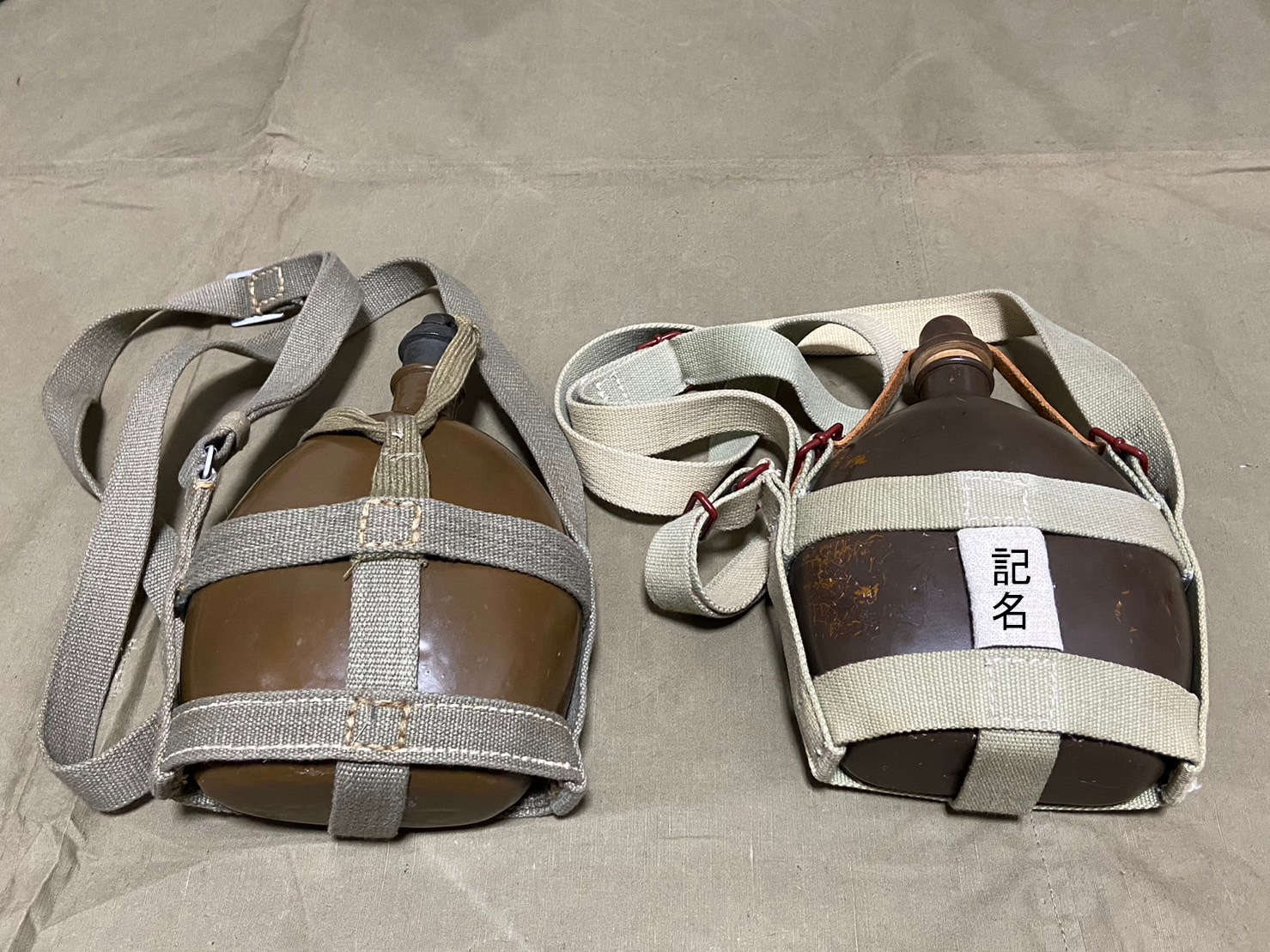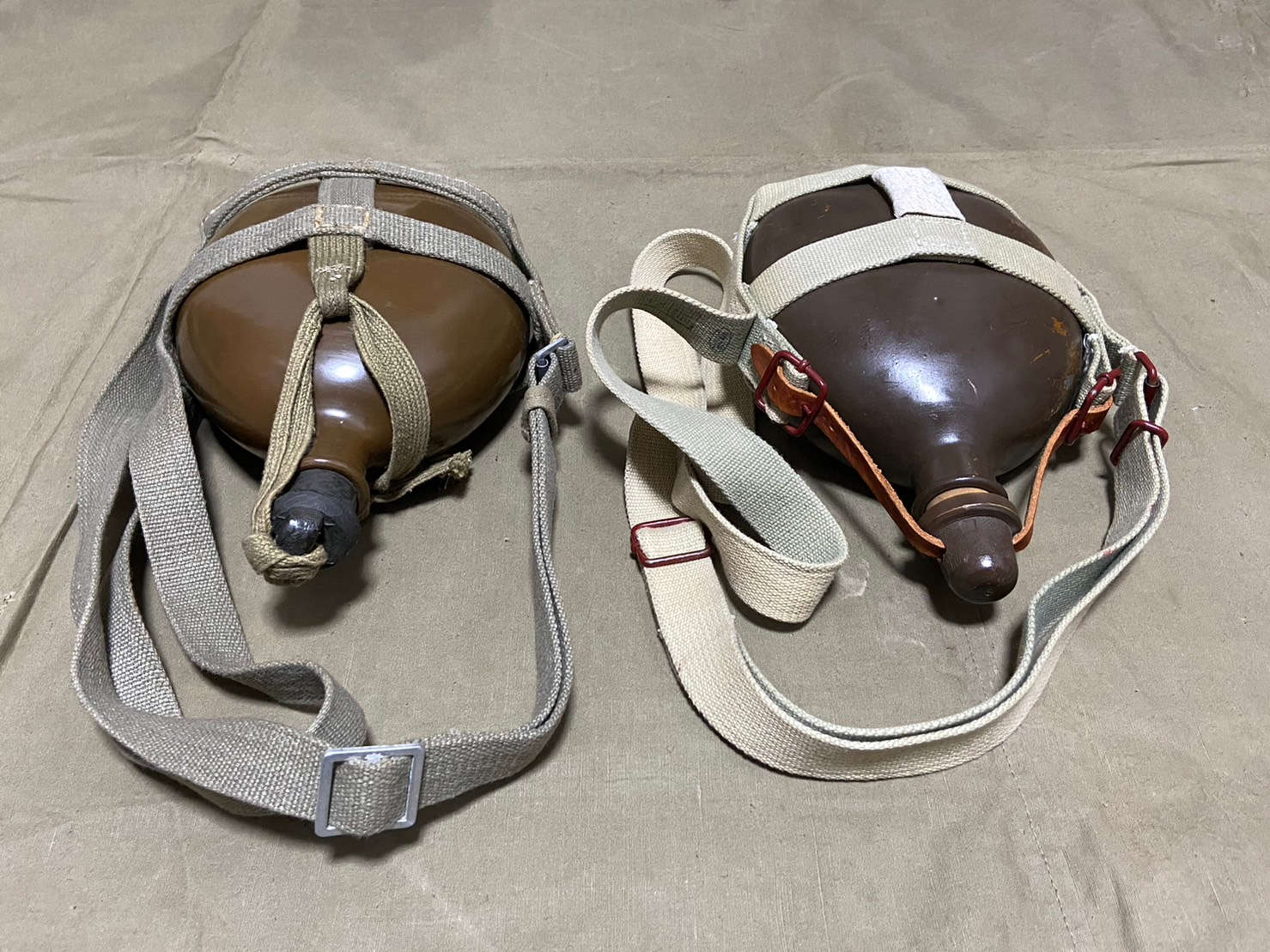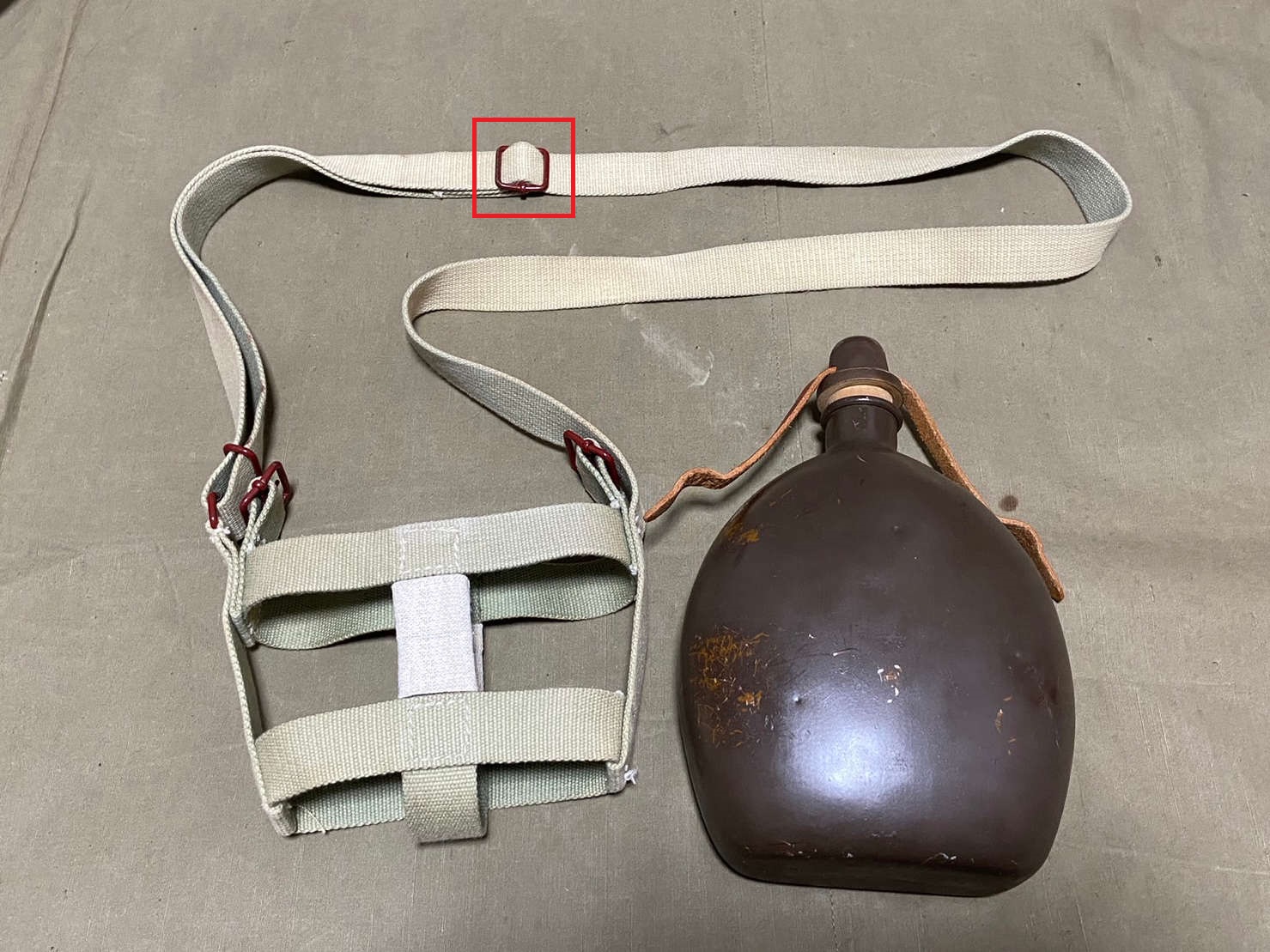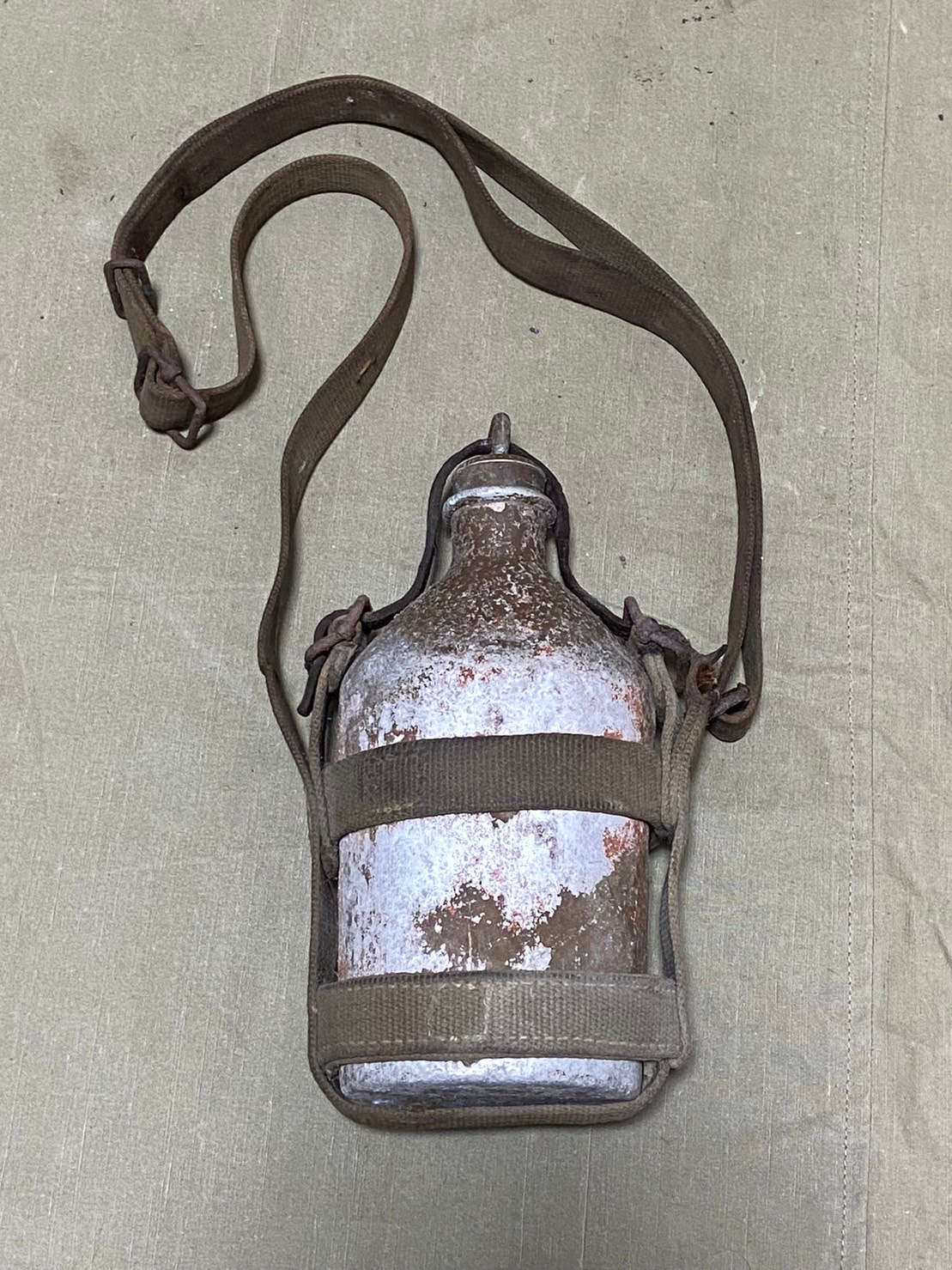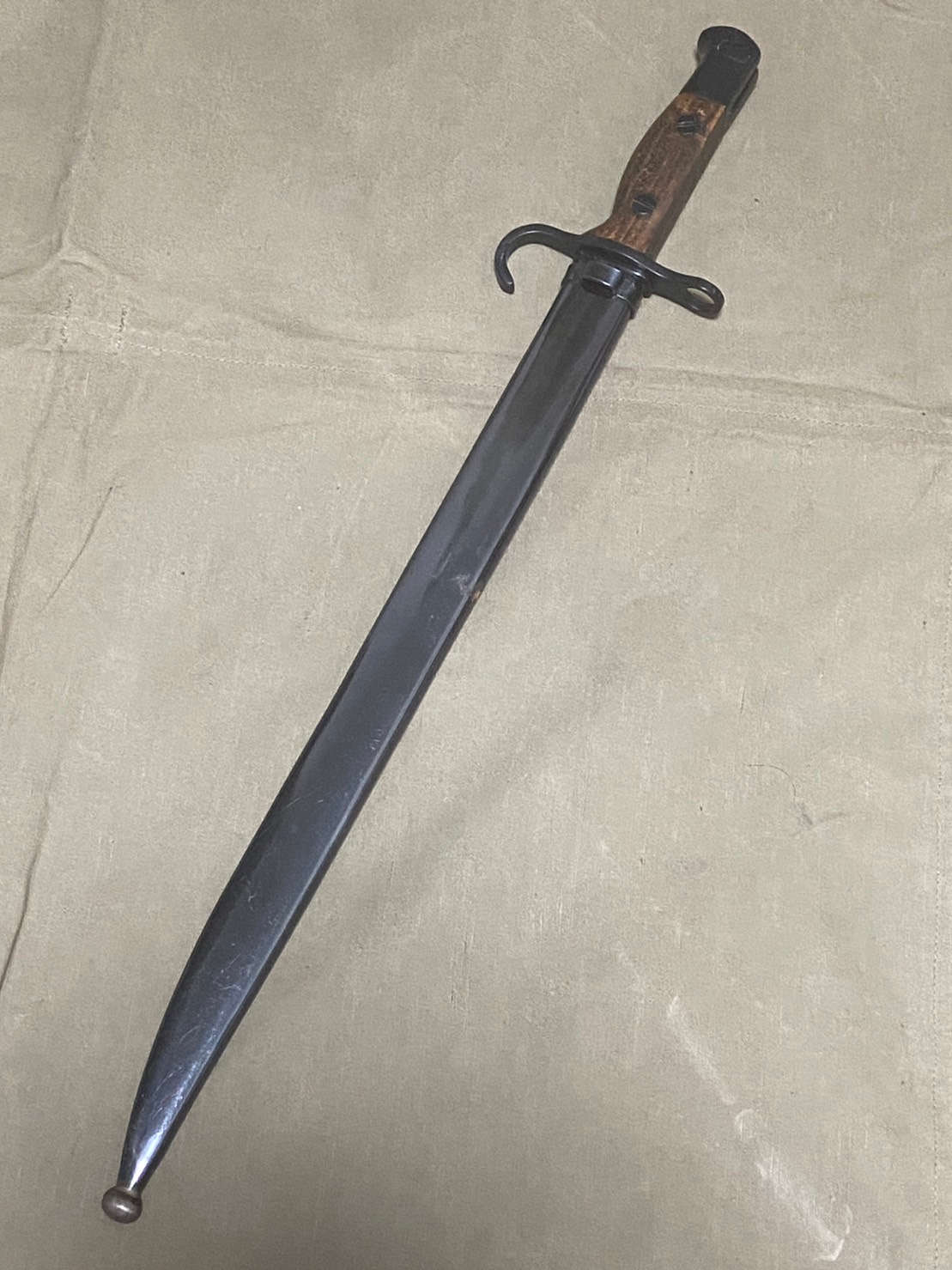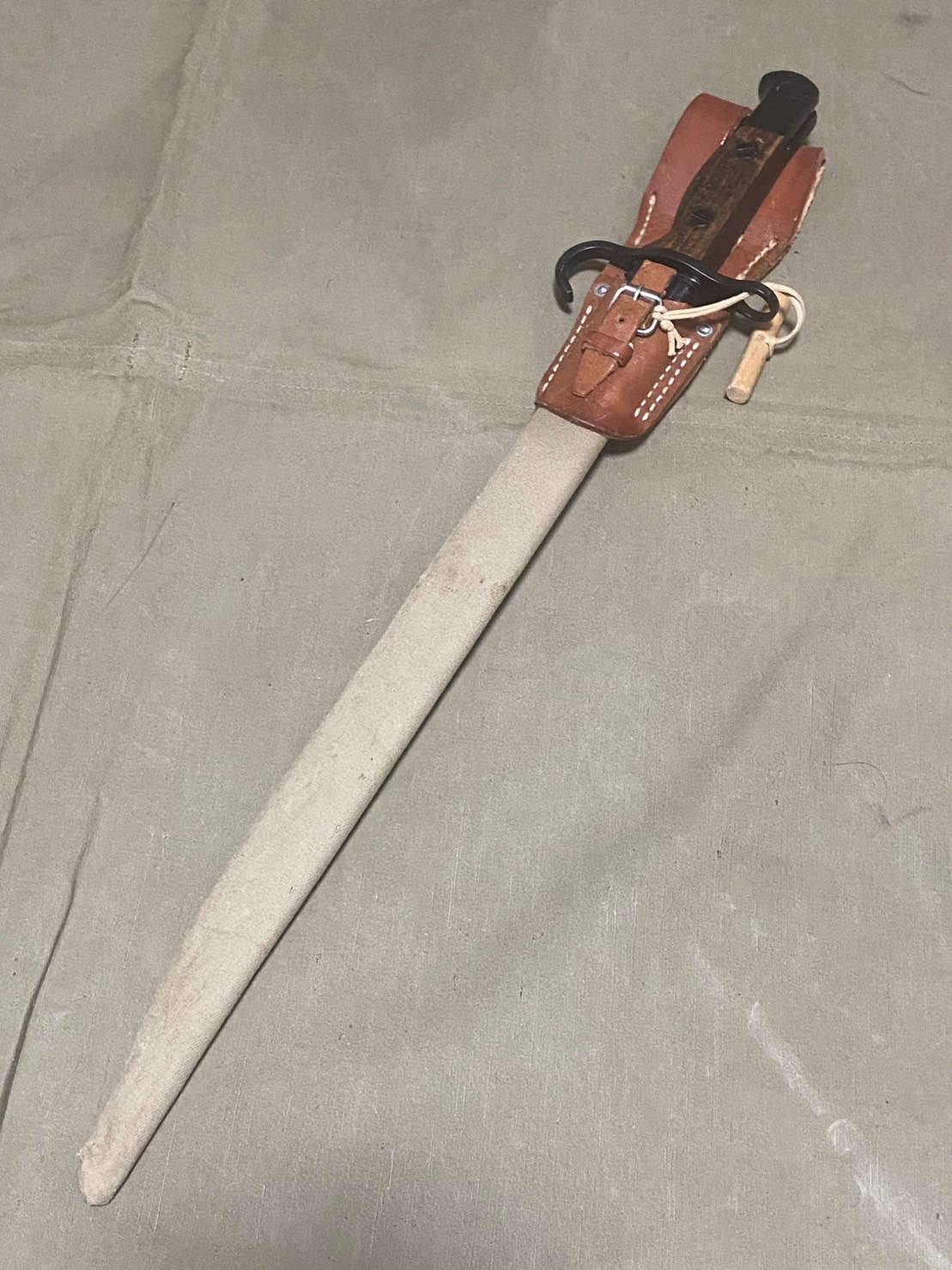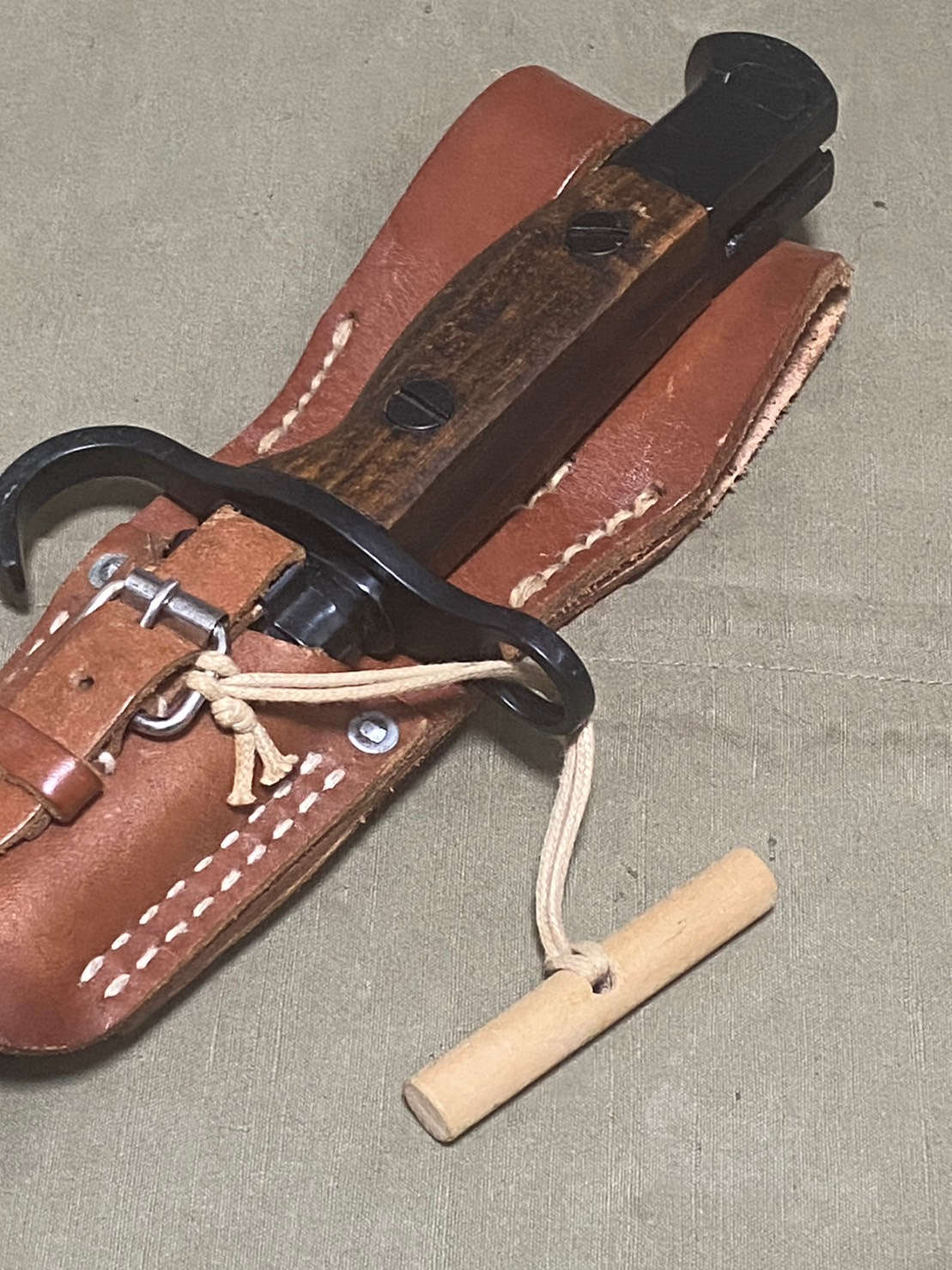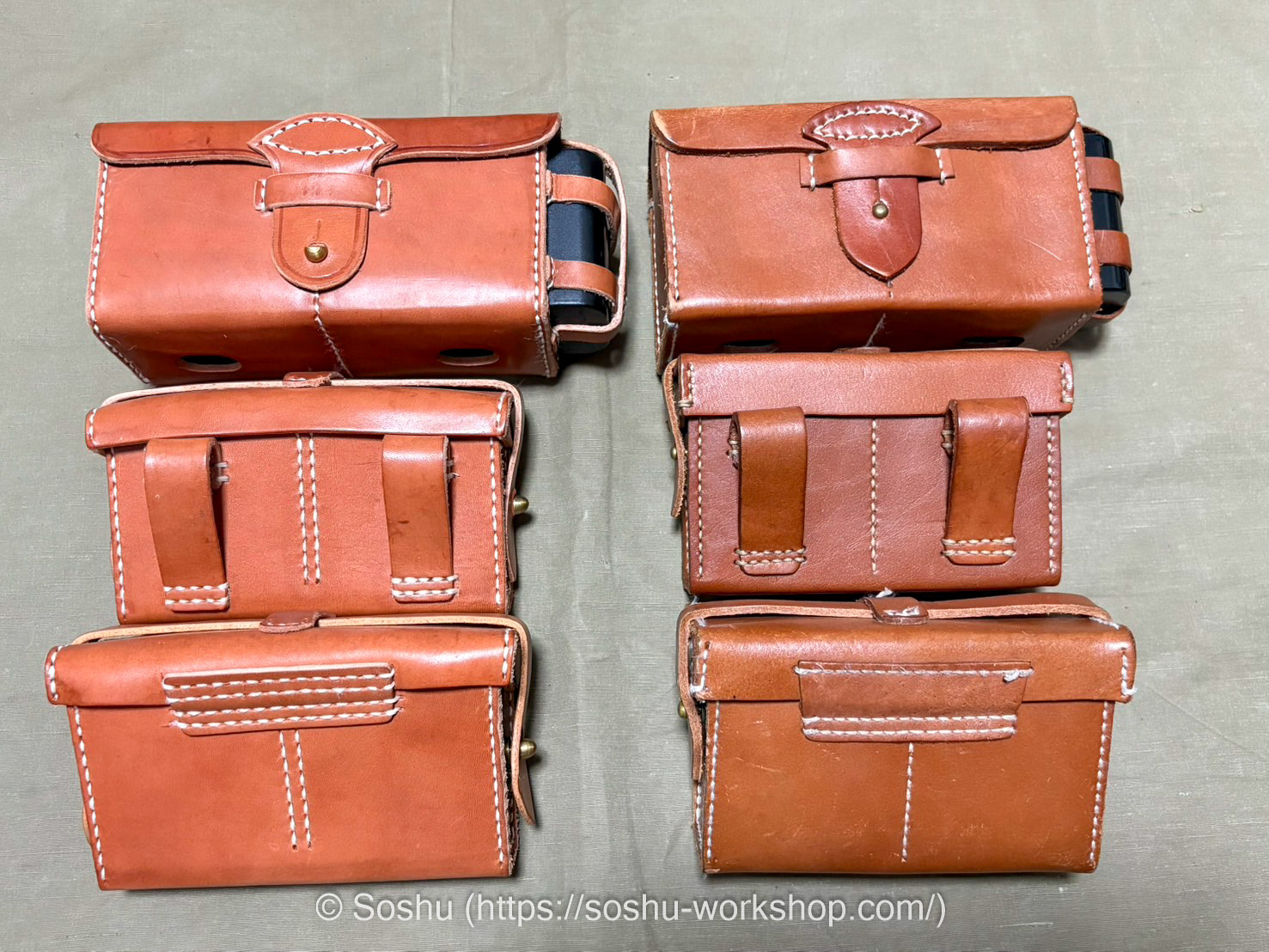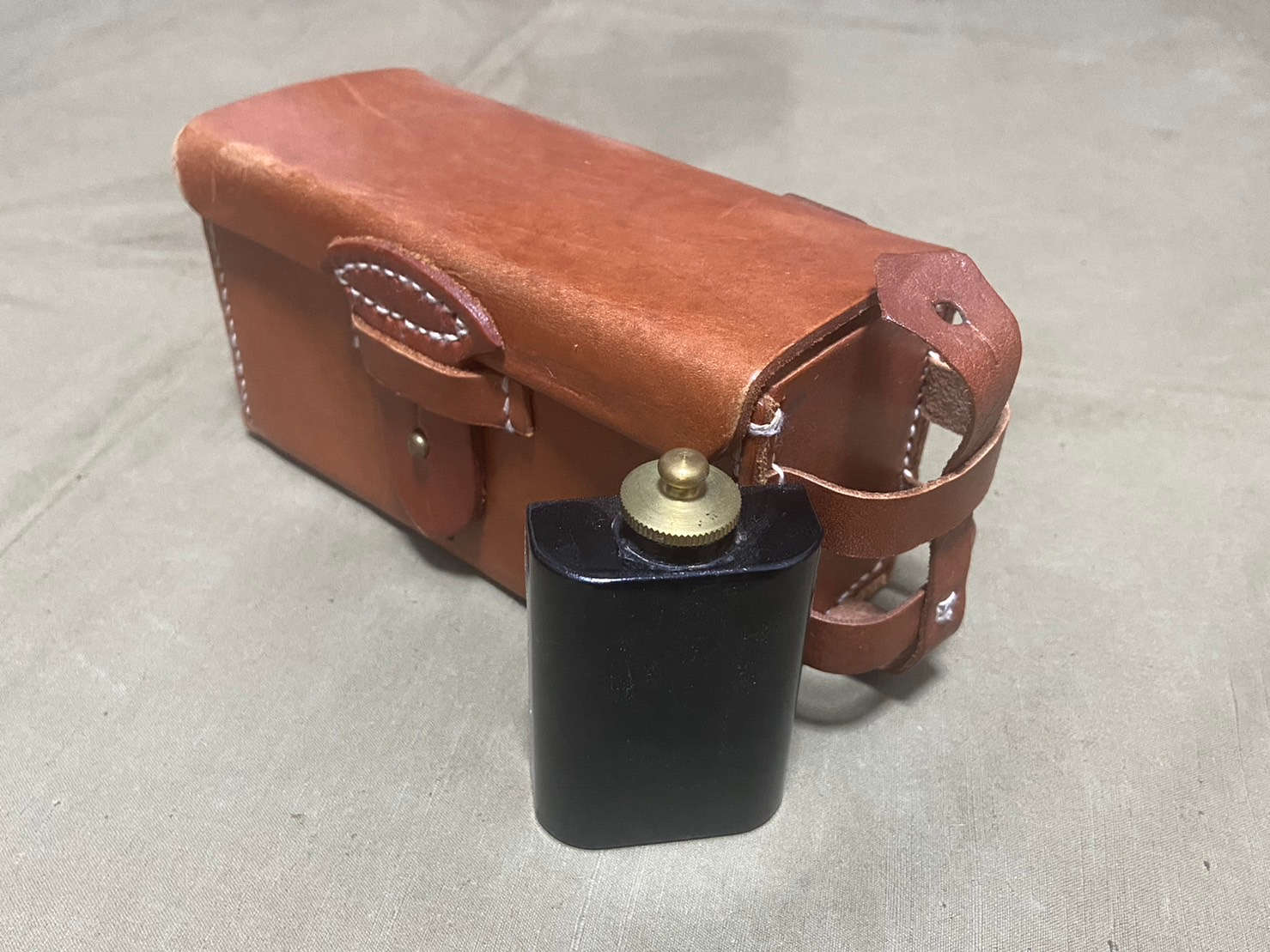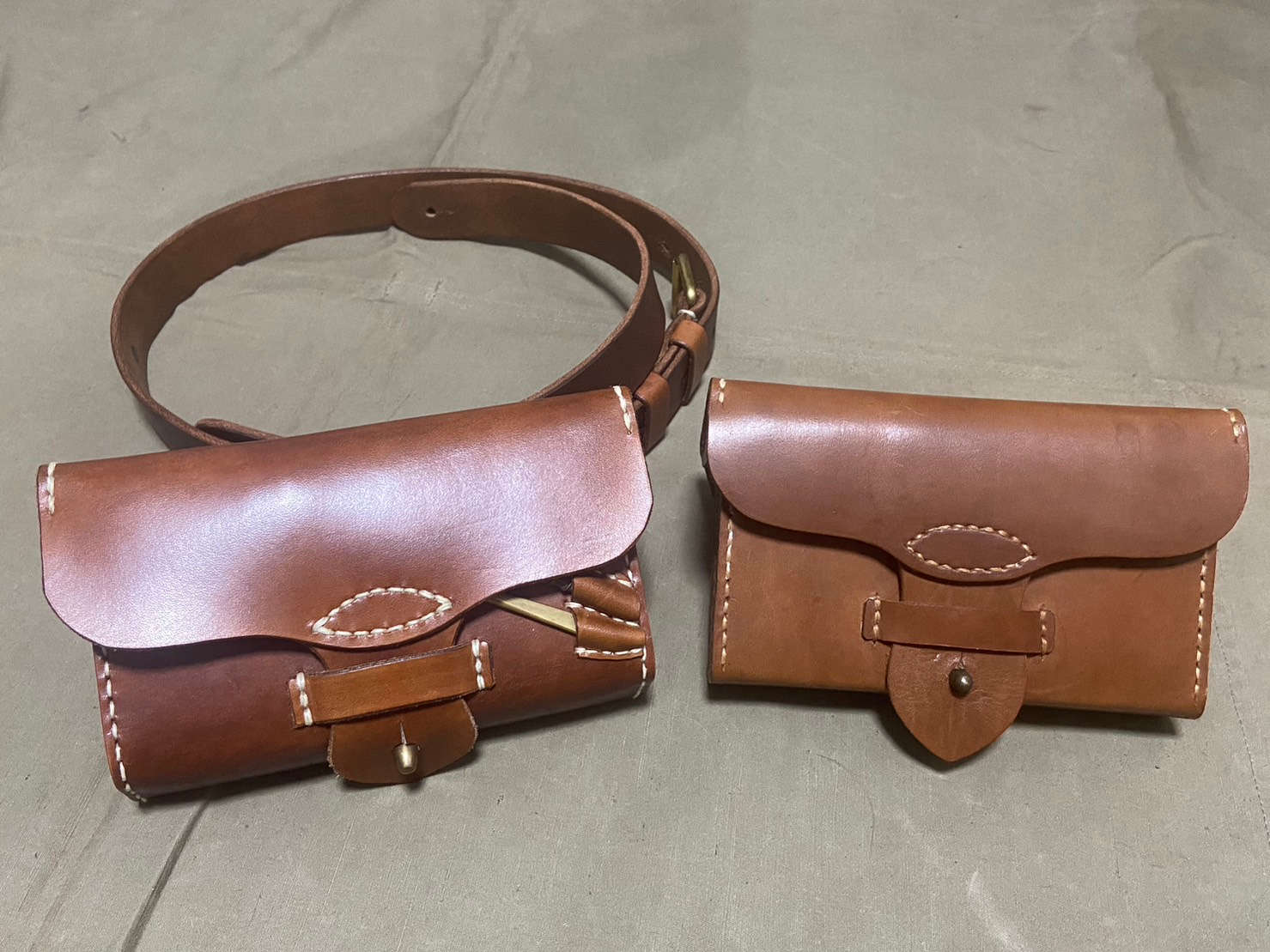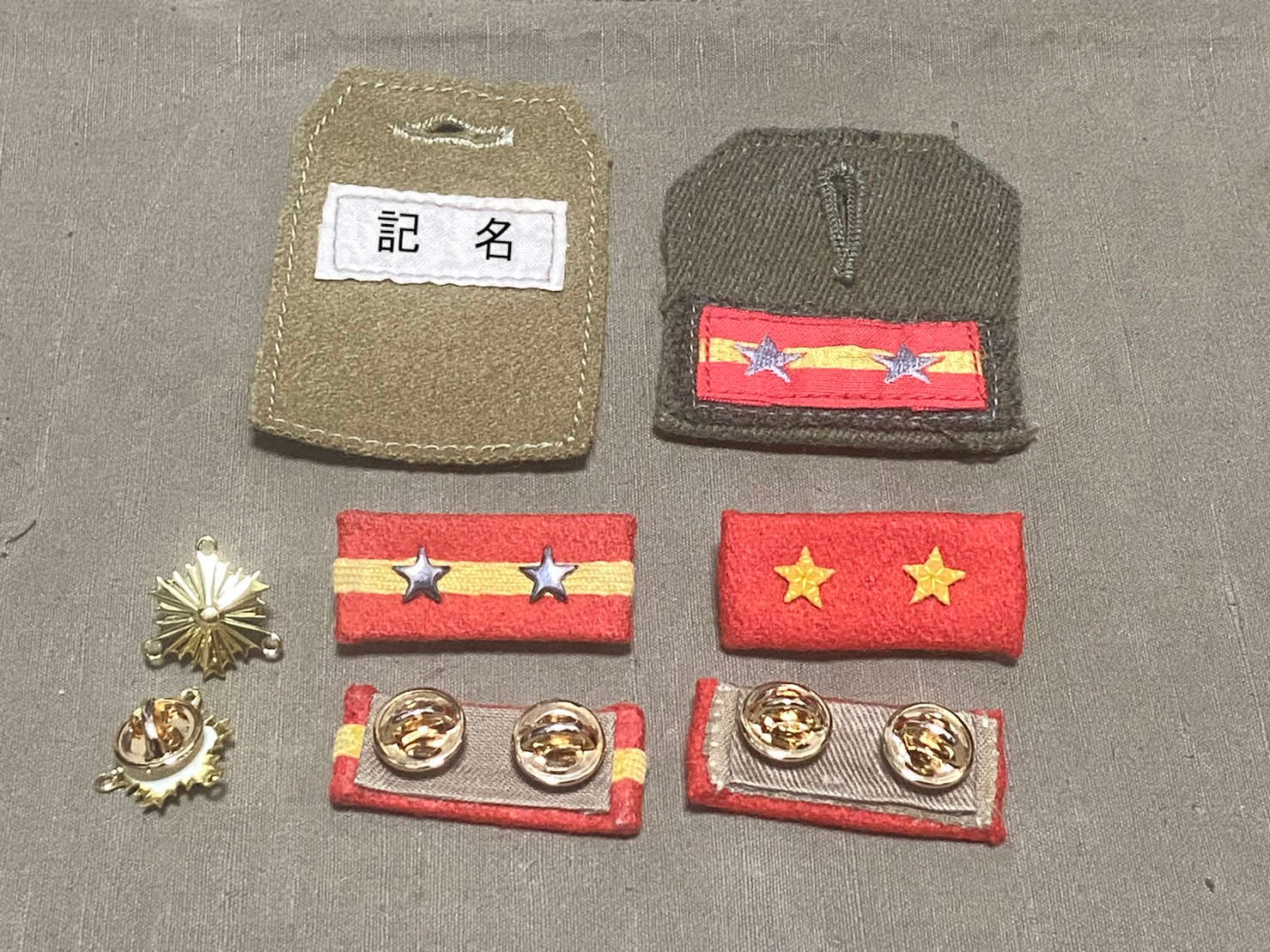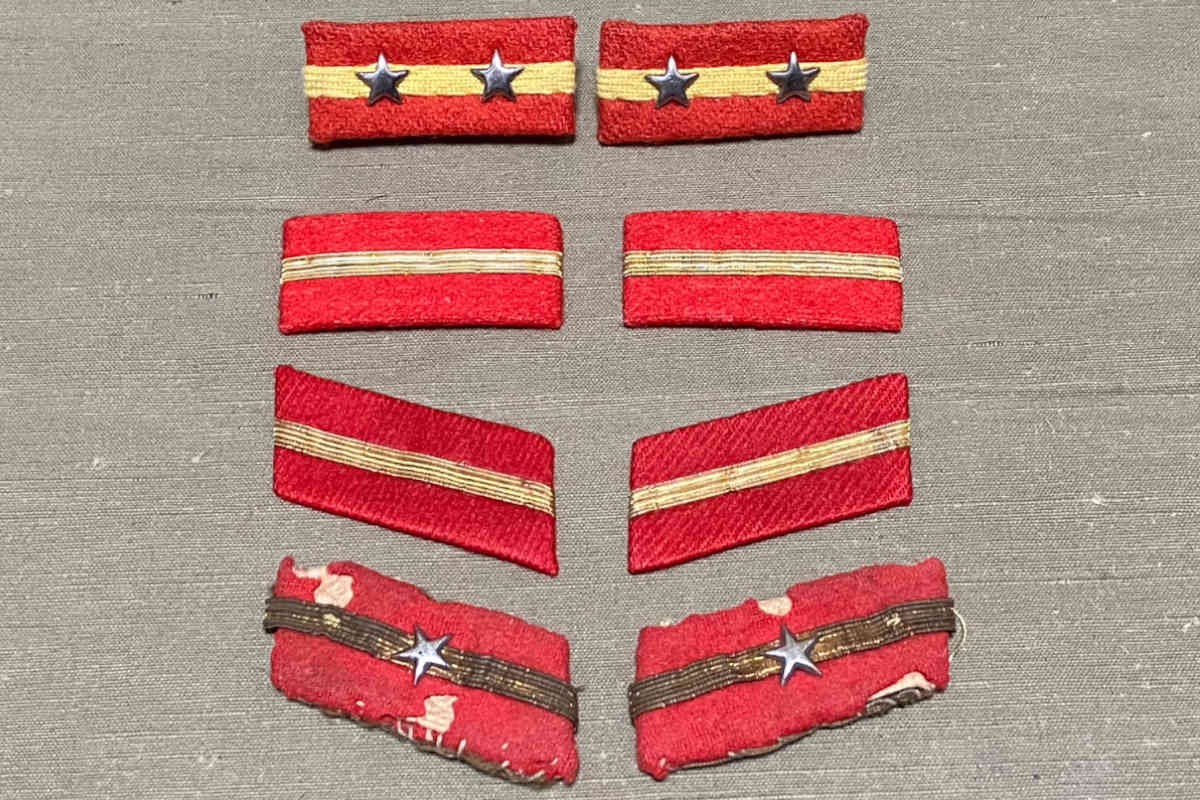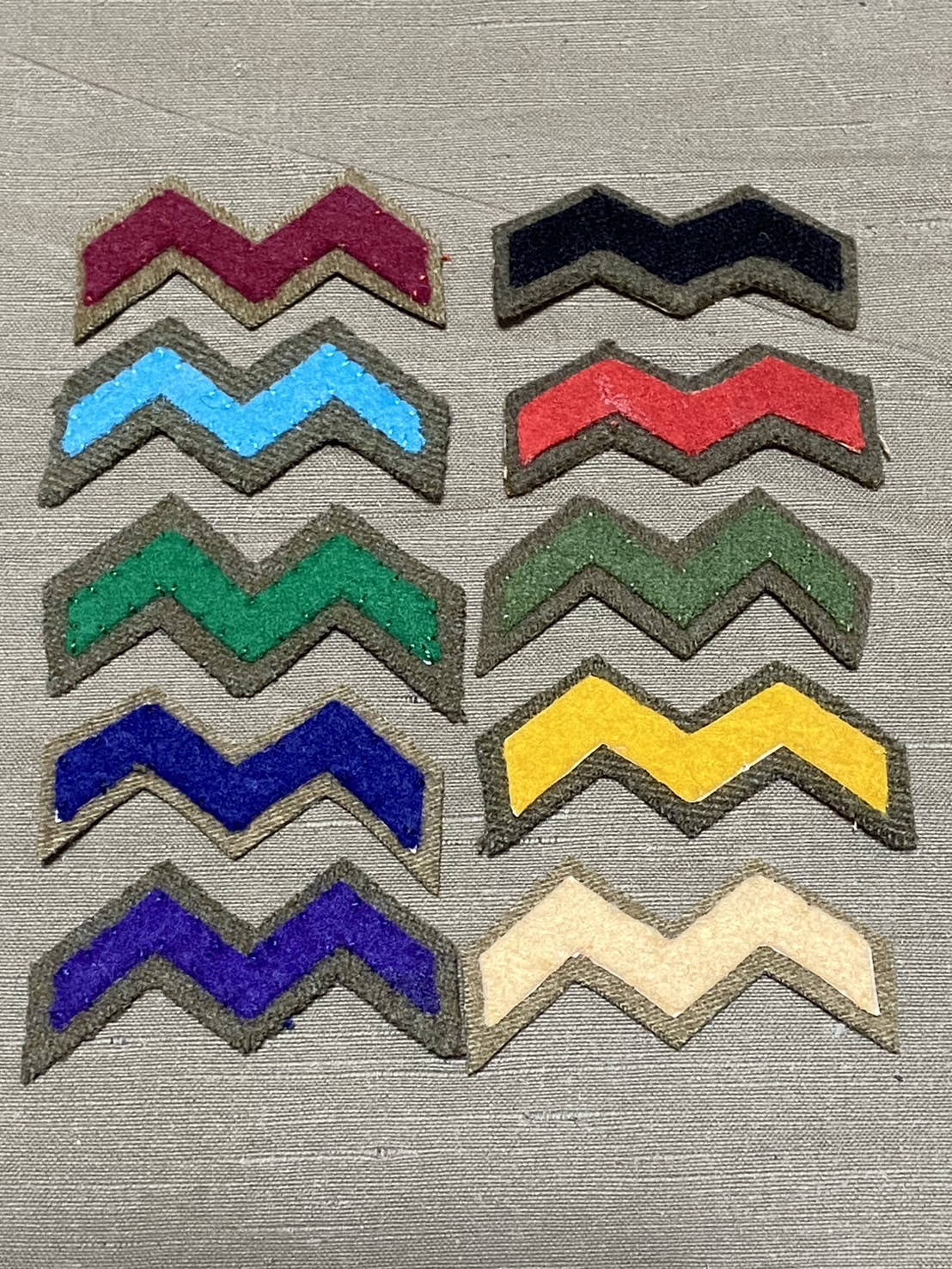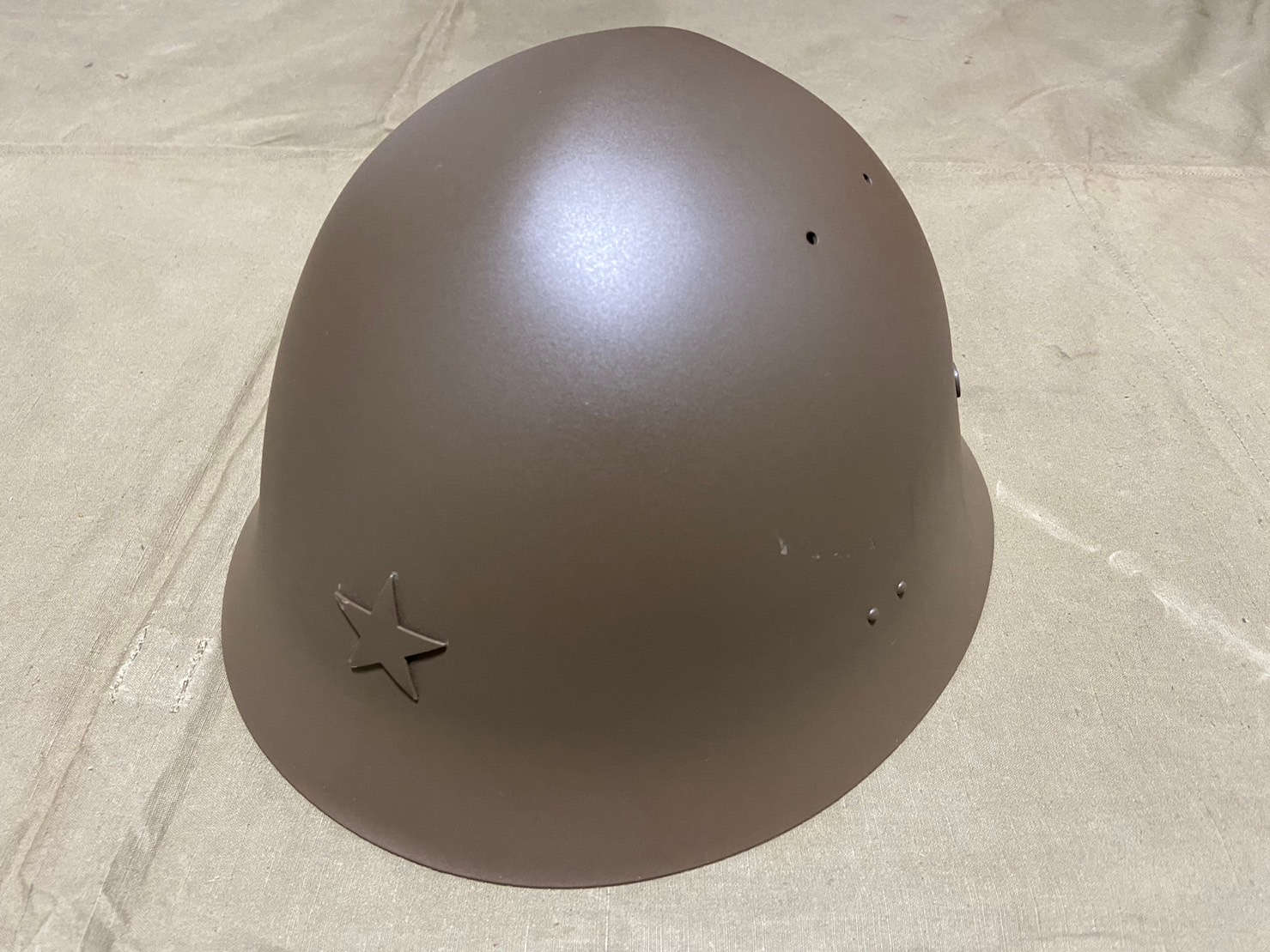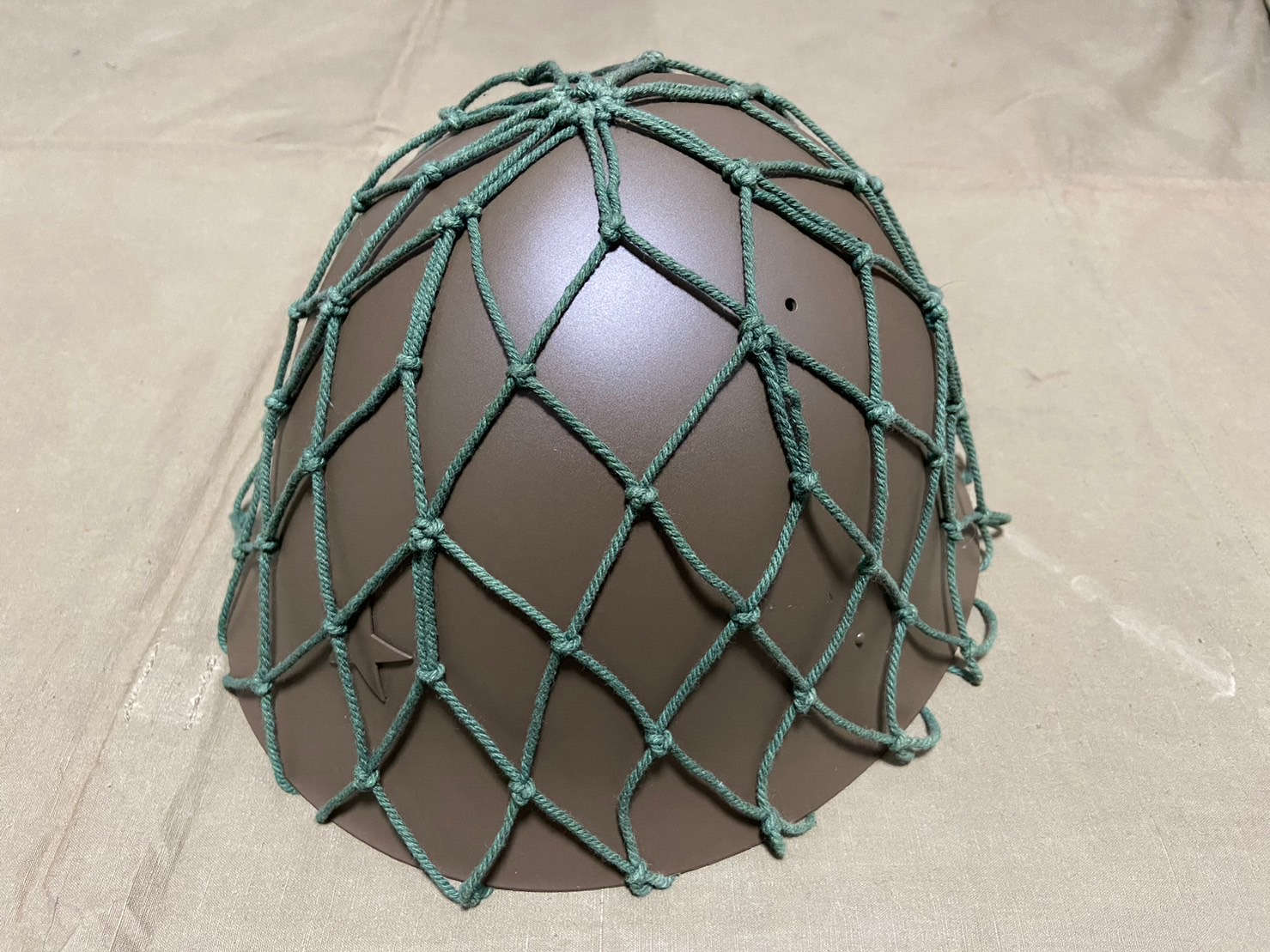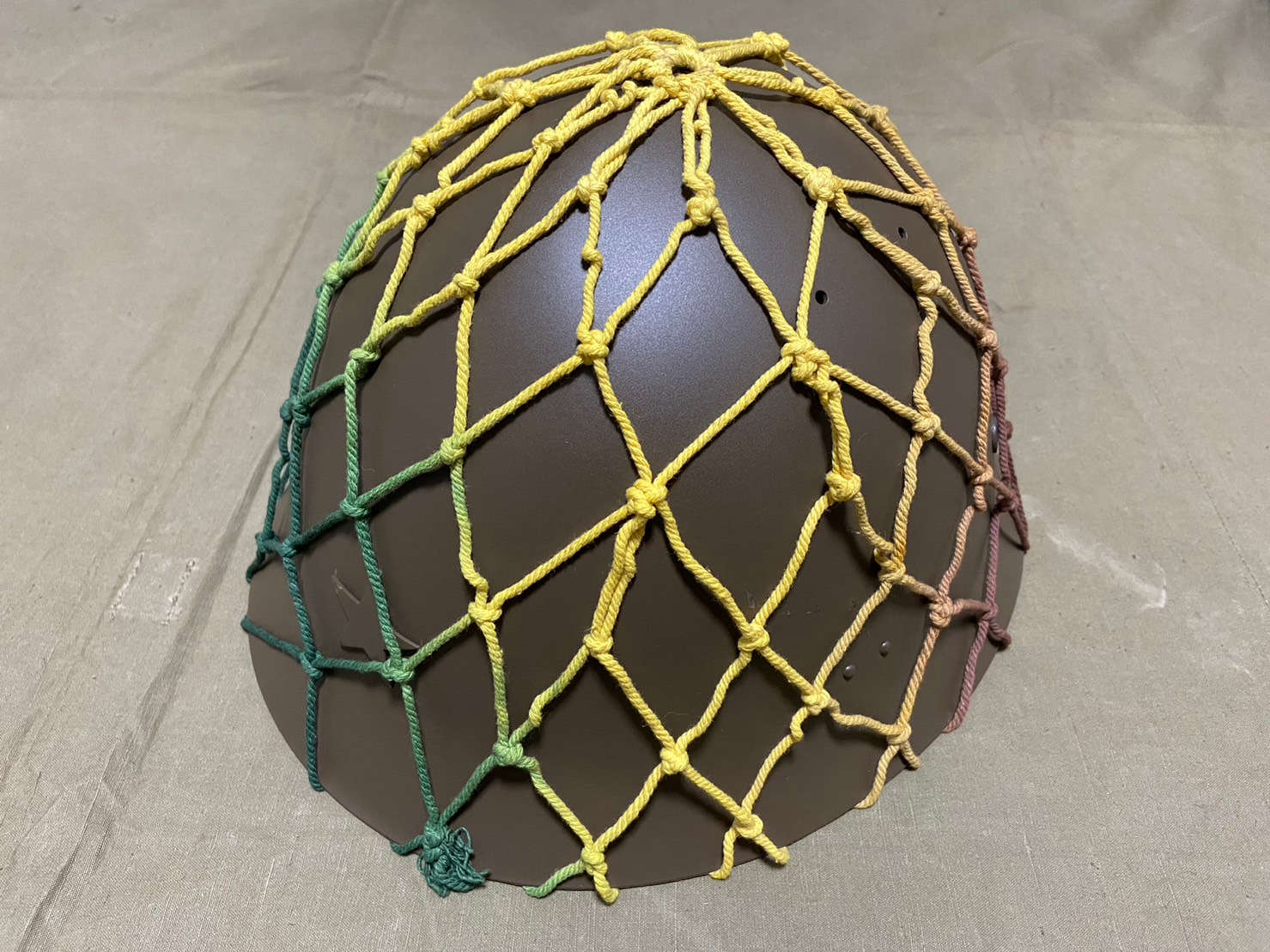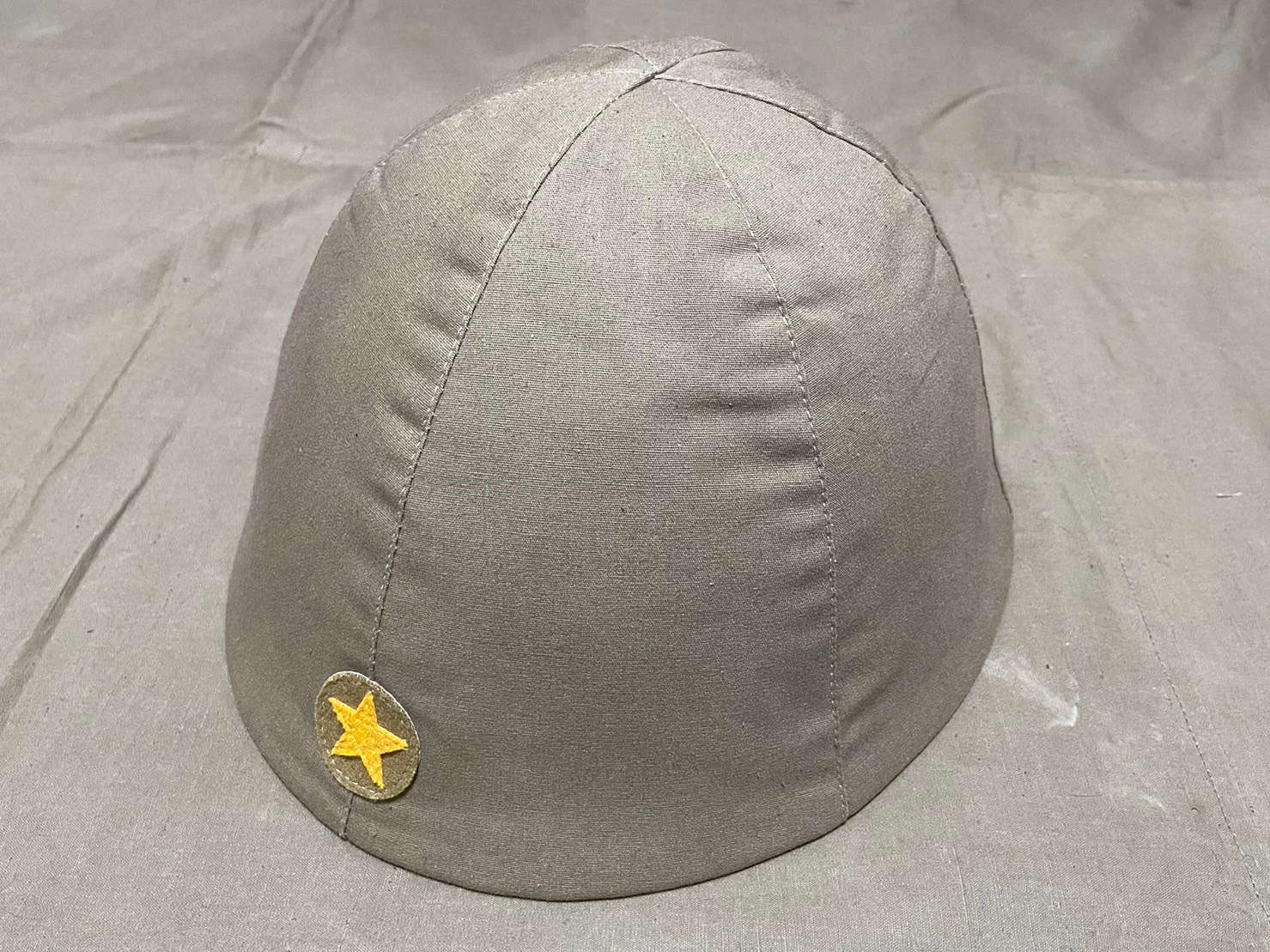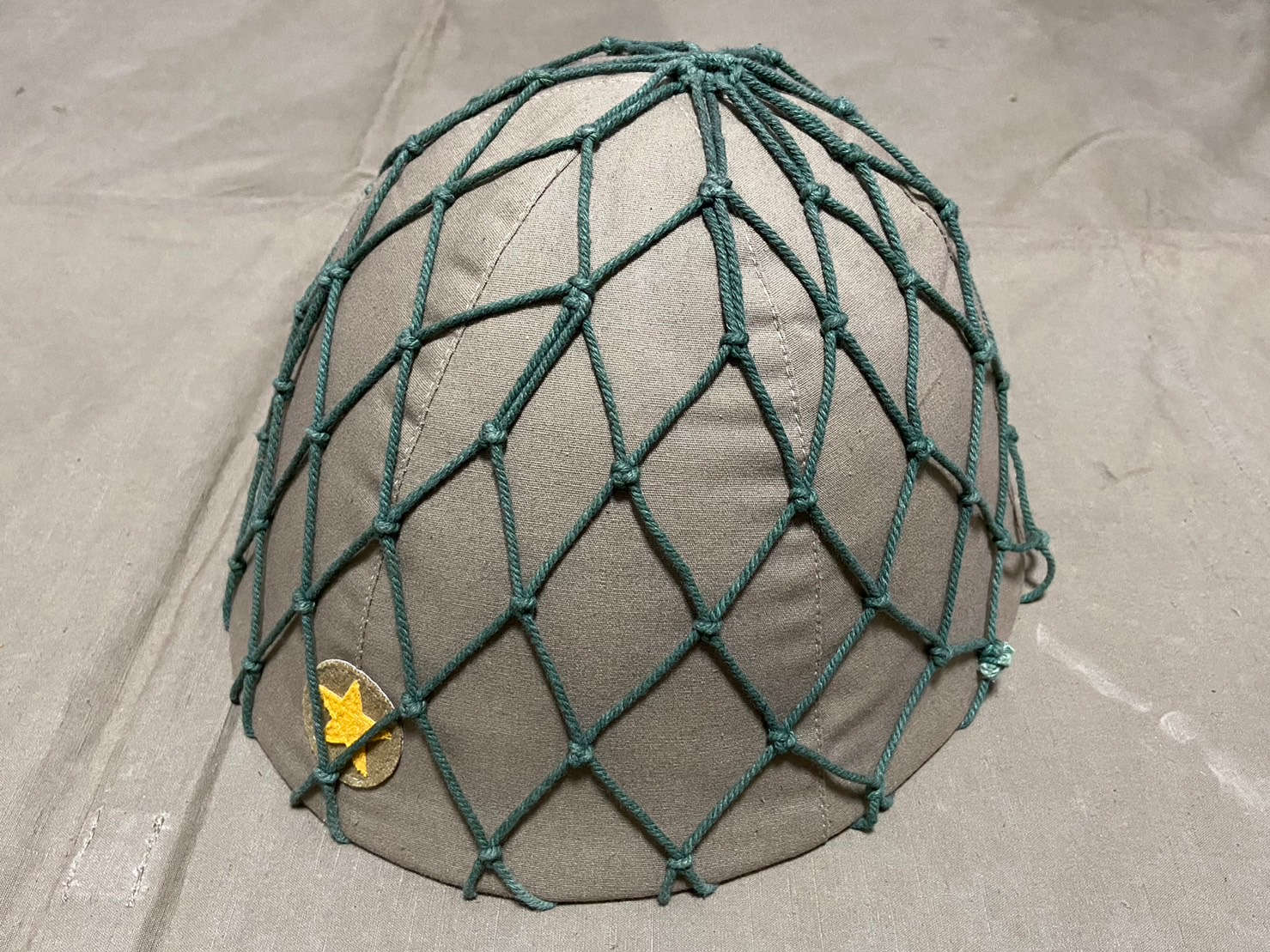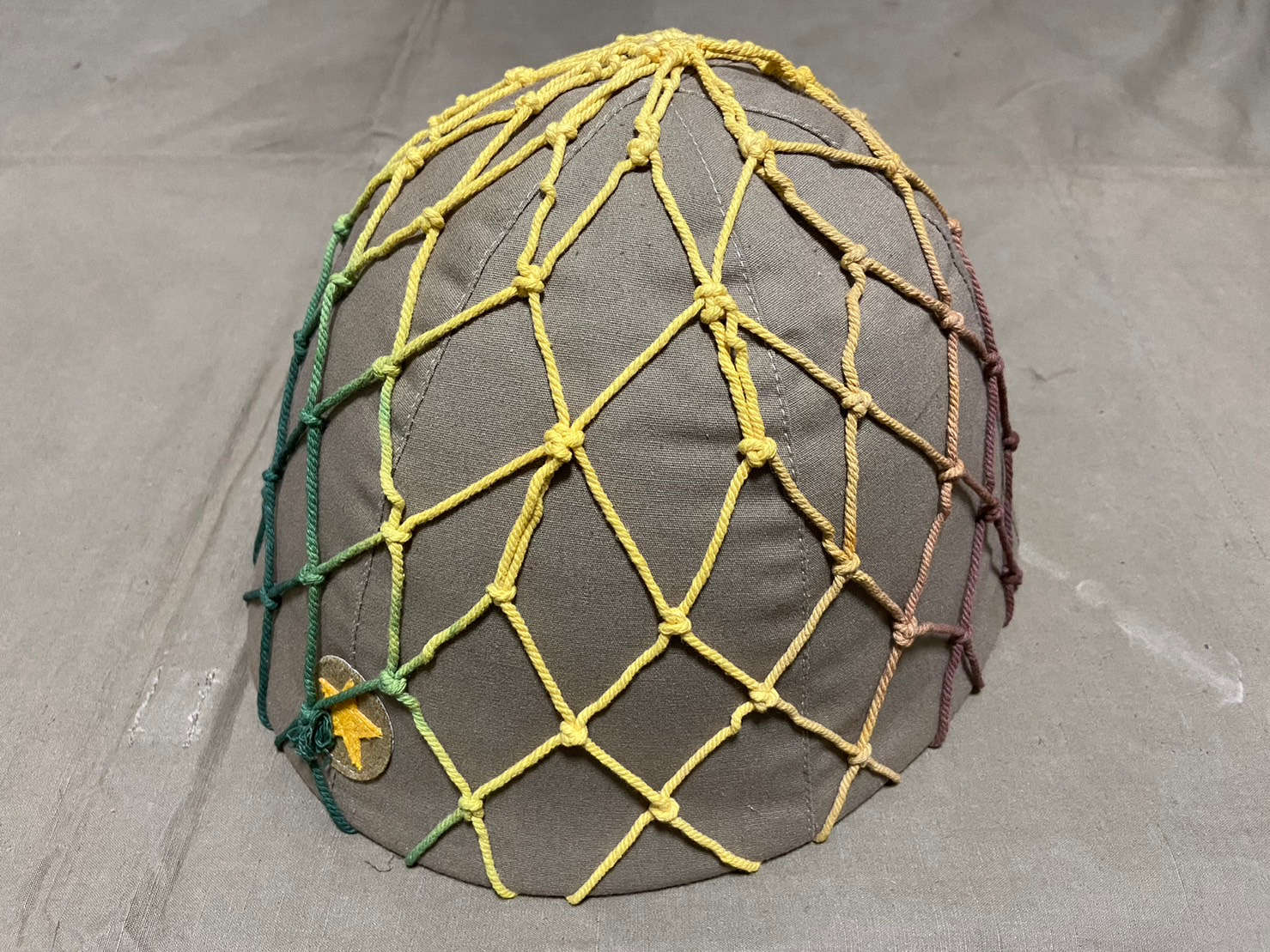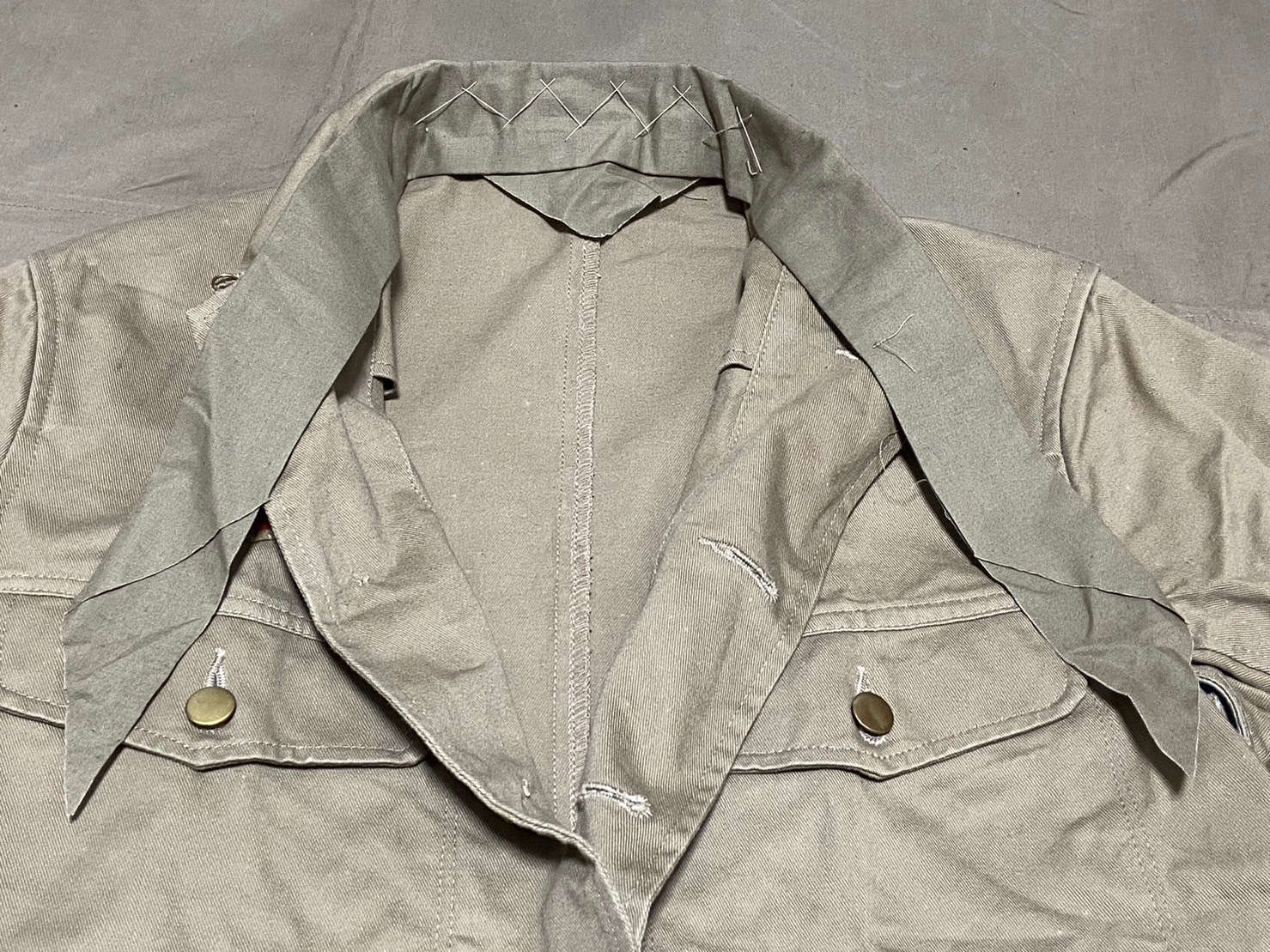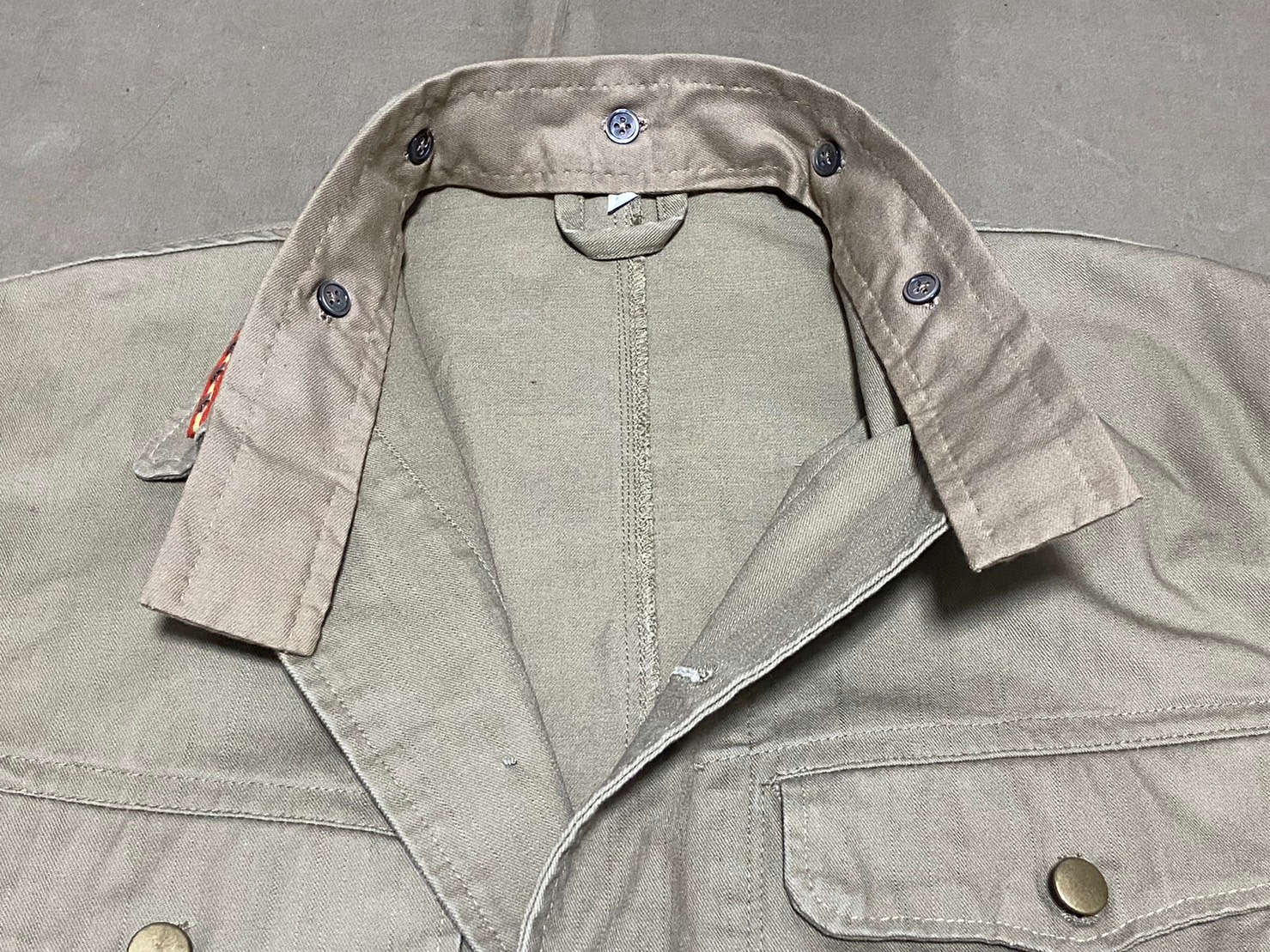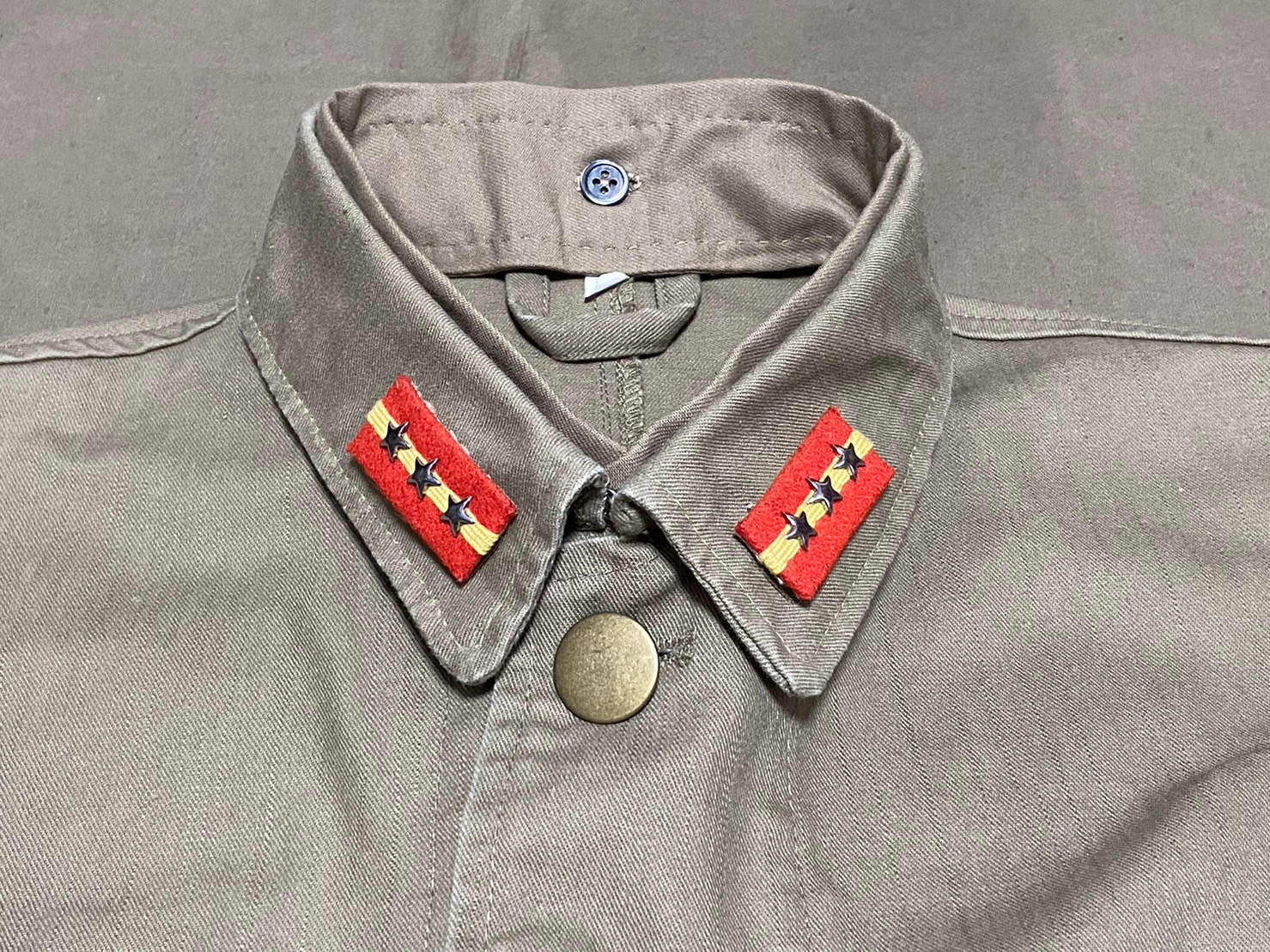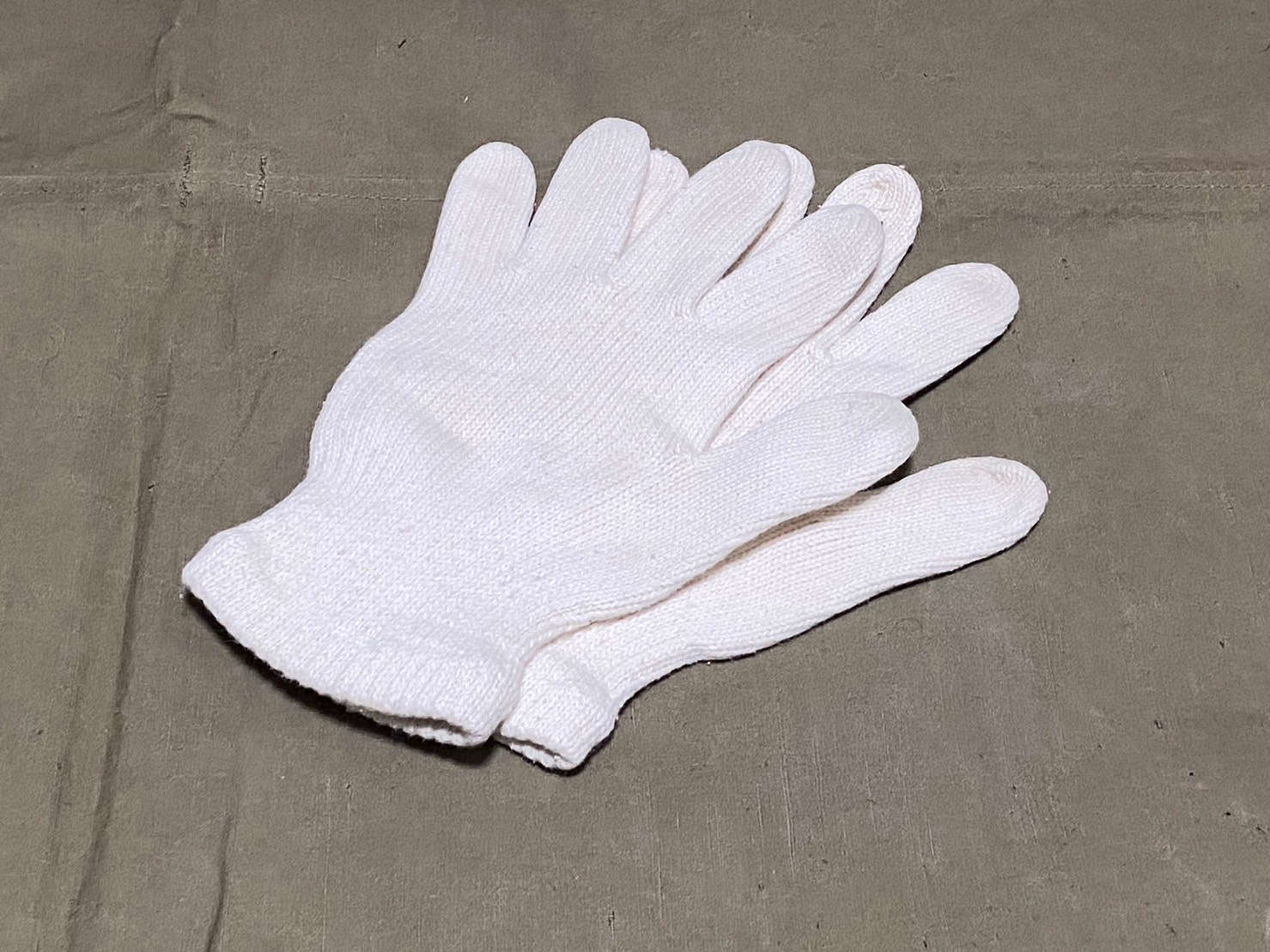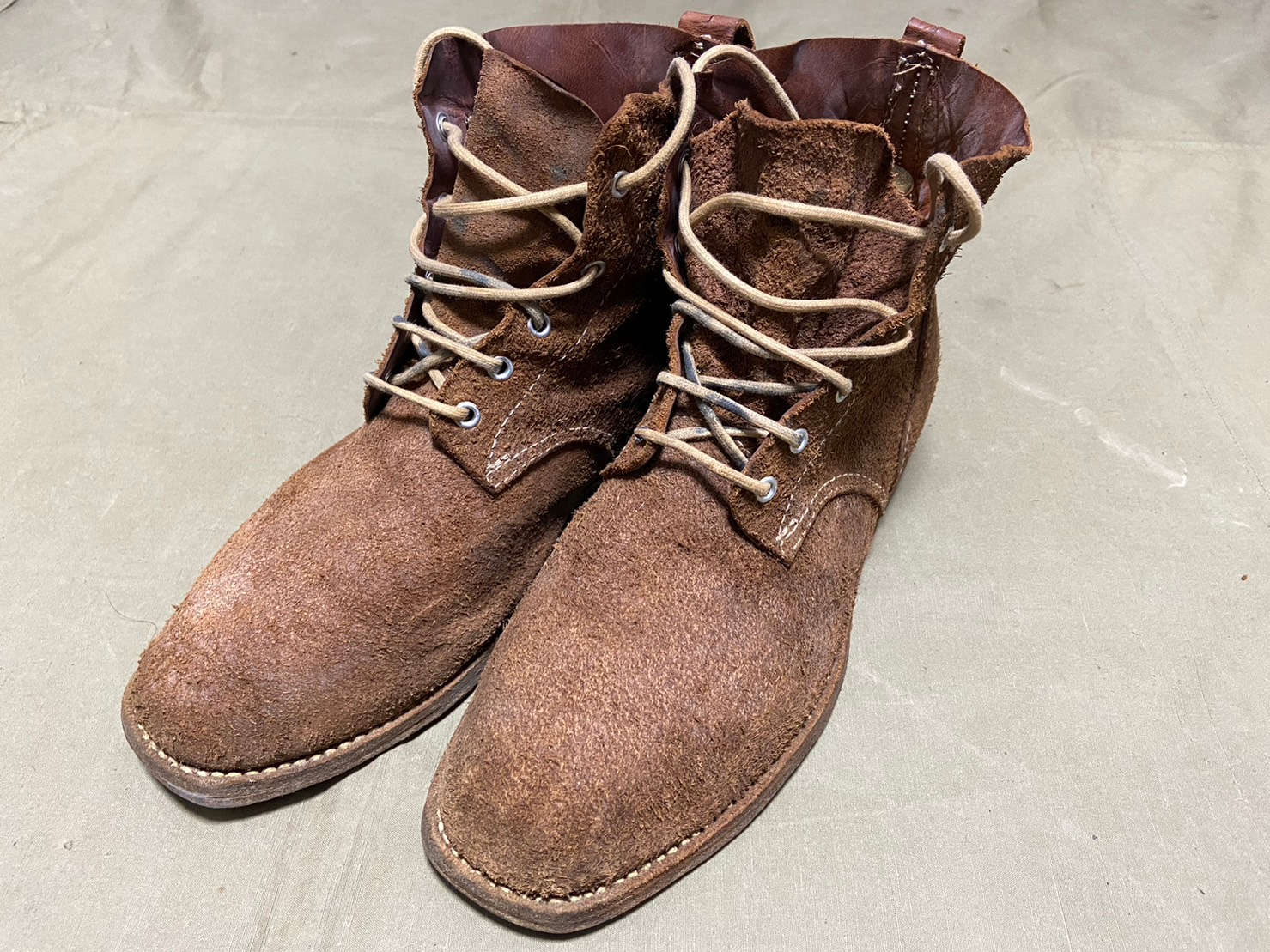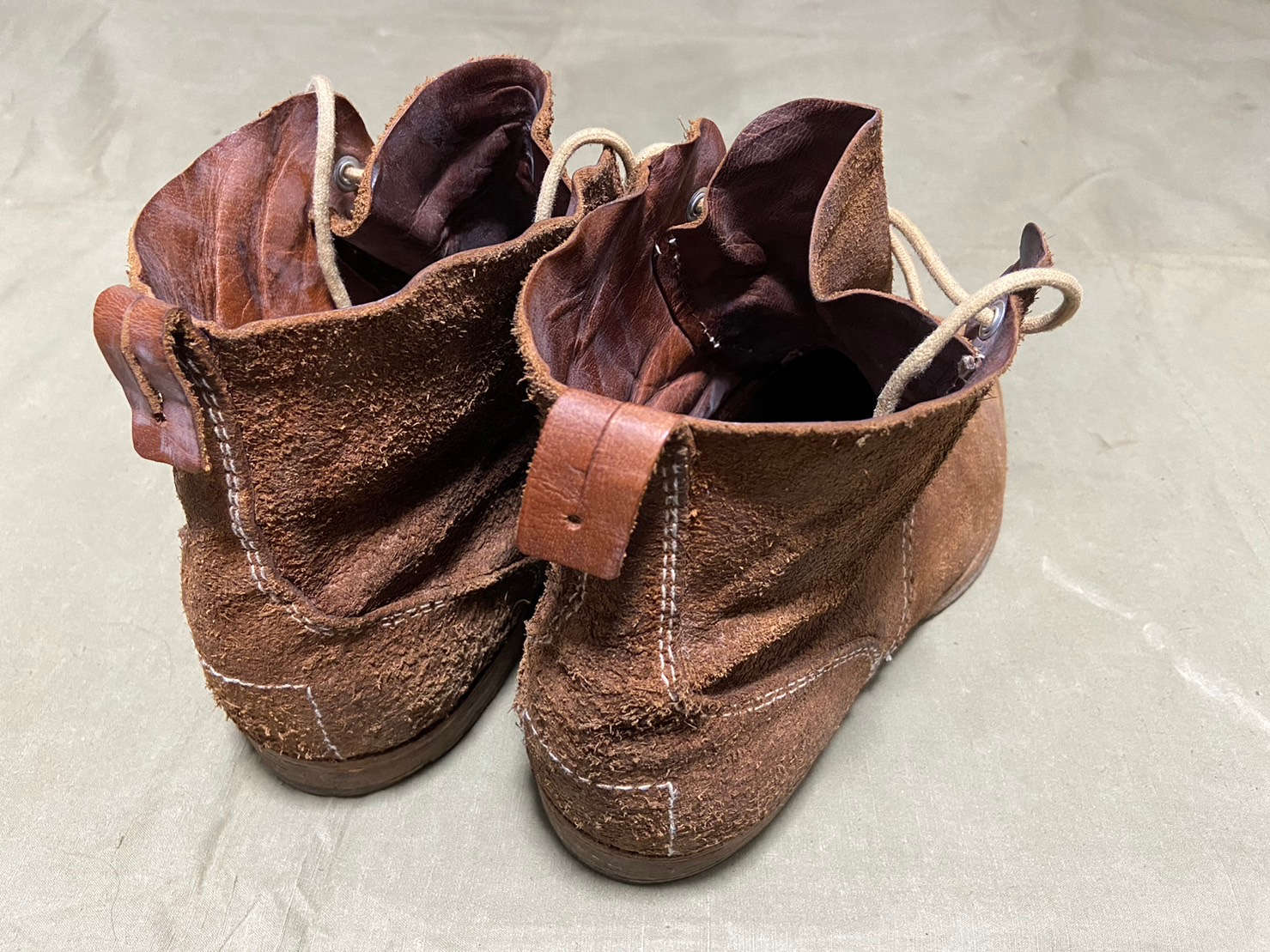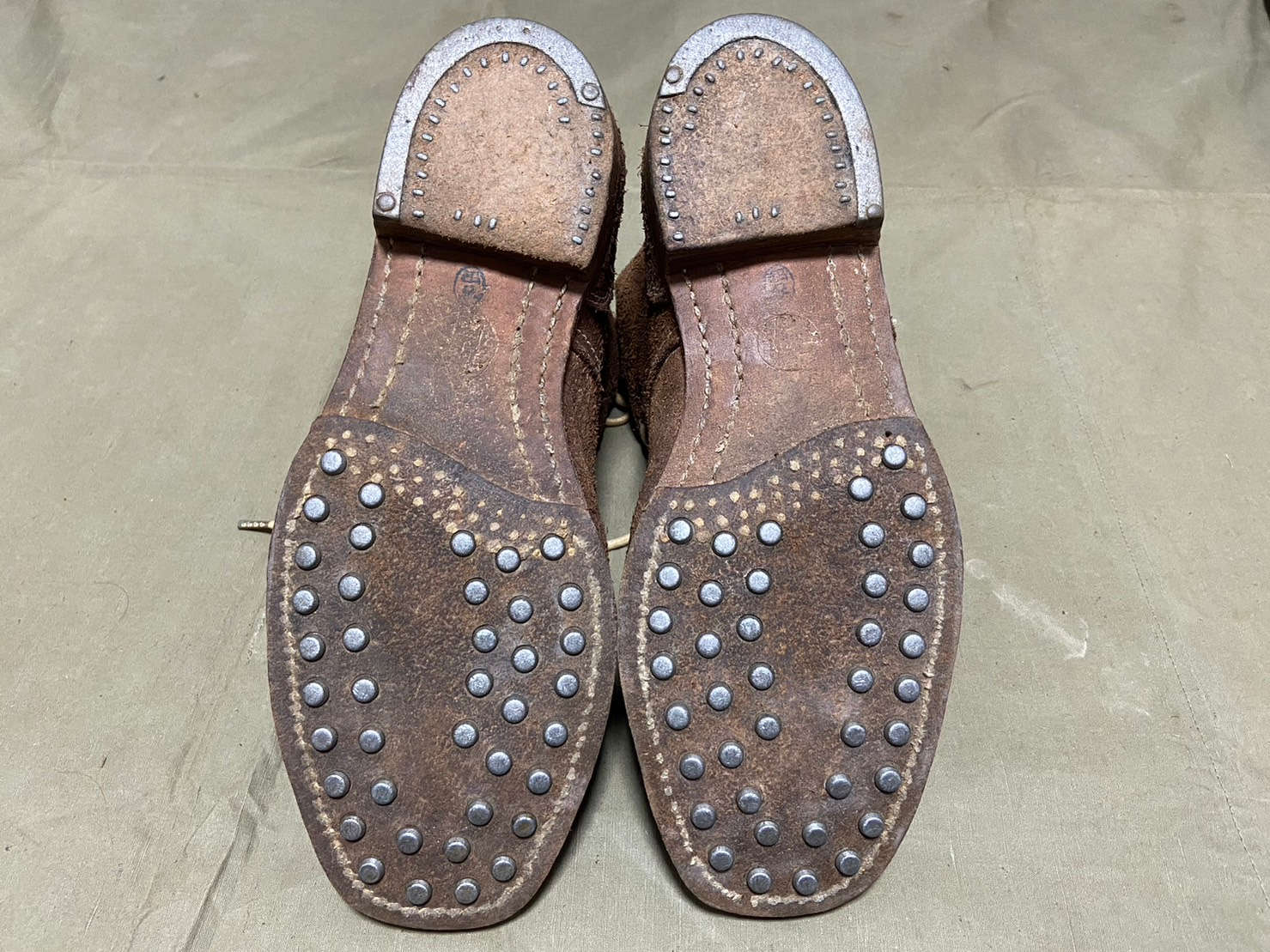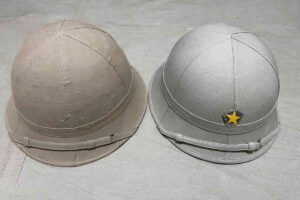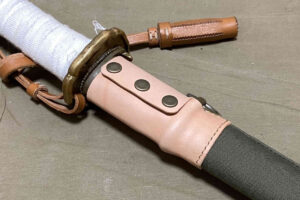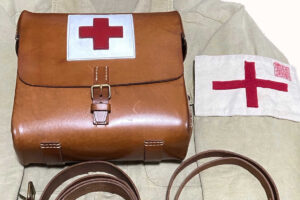I’d like to explain how to collect the basic infantry equipment for an Imperial Japanese Army soldier. Trying to assemble a complete uniform from the start can be quite challenging. Therefore, I’ll provide guidance on what to collect, prioritizing items, over several installments.
| Priority | Standard |
|---|---|
| Beginner | Collecting a military uniform. |
| Intermediate | Collecting official military-issued gears. |
| Advanced | Collecting full kit |
In this intermediate section, I will introduce the equipment that was left out in the beginner’s section due to budget considerations. By completing the intermediate section, you’ll have most of the essential items for a Japanese Army infantryman’s basic uniform. Once you can pull off this look, you’ll undeniably resemble a strong Japanese soldier from any angle.
Type 5 Canteen
The Type 5 Canteen (Sho-go-shiki Suito/昭五式水筒) was the water canteen used by non-commissioned officers and soldiers of the Imperial Japanese Army, often referred to as the “new type canteen” in contemporary documents. This canteen is sometimes referred to as the Type 94 Canteen, but “Type 94” is not its official designation; it is rather a colloquial term. There are three variants of the Type 5 Canteen, distinguished by the type of strap (Tsurihimo/釣紐) used: the I-gō (伊号), Ro-gō (ロ号), and Ha-gō (波号). There are several types of stoppers for the canteen mouth (Kōsen/口栓) —wooden, cork, and rubber. It appears that units simply used whatever stock was on hand at the time, so a wide variety of combinations can be observed, regardless of the year of manufacture or the specifications of the strap. Replicas are available, with HIKISHOP and S&Graf offering the I-gō model for sale.
I have a HIKISHOP product, but I’ve made some minor modifications to enhance the details. It’s something you can easily do, so please give it a try.
- The color of the water bottle’s cylinder seemed a bit too bright, so I mixed model paint to match and repainted it. (I remember using a mix of Tamiya Acrylic Red Brown and Flat Brown.)
- The strap loop that holds the mouthpiece in place was made of cheap synthetic leather, so I replaced it with a piece of leftover leather.
- I attached a name tag to the lanyard and wrote my name on it. Some people scratch off the paint on the water bottle’s cylinder with something like a nail and write their names.
You can often find authentic canteens on Yahoo! Japan Auctions. These typically go for around 4,000 to 6,000 yen and are priced similarly to replicas. However, please note that these authentic items, being made of aluminum, can dent when hit by BB pellets, so it’s advisable to use replicas for airsoft games.
There are also older-style canteens with a long and slender shape that resemble sake bottles (Tokkuri/徳利). To the best of my knowledge, there are no canteen body replicas available, and only authentic items are in circulation. These canteens are quite rare, which drives up their prices compared to the Type 5. I possess an old-style canteen that belonged to my grandfather. Unfortunately, due to poor storage conditions, the canvas strap broke due to rust on the metal fittings. The canteen’s paint is also peeling, but I keep it as a historical artifact.
For my collection of authentic Canteens, please refer to the article linked here.
Type 30 Bayonet
The weapon carried by almost all non-commissioned officers and soldiers, excluding those who are officially equipped with swords, such as military police, cavalry, and transport soldiers. There are replicas of the Type 30 Bayonet (Sanjunen-shiki Jūken/三十年式銃剣), such as Windlass, S&Graf, and others.
Bayonets made by Windlass are relatively easy to obtain, but they have a reputation for lacking accuracy in shape. The distinctive form of the scabbard tip is particularly noticeable, although it becomes less conspicuous once a scabbard cover is fitted. That said, I ultimately reshaped the tip with a sander and repainted the scabbard before using it.
S&Graf replicas are popular for their accurate shape, but they have been out of stock for a long time. As a result, when they occasionally appear for sale on Yahoo! Japan Auctions, they are traded at considerably high prices. Additionally, there are individual craftsmen who make replicas with rubber blades. They might be suitable for use, especially when paired with scabbards made by HIKISHOP.
In Japan, authentic bayonets have their blades cut to less than 6 cm to comply with the Firearm and Sword Control Law. Wearing a bayonet with a cut blade during vigorous movement might cause damage to the scabbard as it’s empty inside. In Japan, despite the blade being cut, it’s still a genuine weapon, and carrying it might not be completely risk-free from the possibility of being apprehended. Therefore, it’s advisable to possess replicas instead.
Ammo Pouch
Infantrymen typically carry a total of three ammunition pouches (Danyaku-gō/弾薬盒), with two in the front and one in the back. There are several variations, such as the early-type with angular shapes, the later model with a more rounded design, and those specifically made with rubberized fabric for tropical use. The early angular type is considered to have higher versatility. Additionally, attaching an oil can on the right side of the rear pouch enhances the accuracy of the gear for a more authentic representation.
Replica ammo pouches are relatively easy to find from HIKISHOP and S&Graf, but HIKISHOP’s version is superior in terms of accuracy of shape. S&Graf’s model, on the other hand, reproduces a type said to have been used for school military training, and therefore differs in several aspects from the standard specifications of authentic wartime examples. Please refer to this article for more information on replica ammo pouches.
By the way, cavalry rifles are accompanied by a slightly differently shaped ammunition pouch known as the cavalry ammunition pouch.
Rank Insignia
Since the Type 98 Tunic with a folded collar, rank insignia began to be worn on the collar. In 1938 (Showa 13), they used intricate rank insignia, commonly referred to as “Zabuton” (cushion/座布団), which were thick and elaborate. In 1942 (Showa 17), due to resource conservation, the material changed to a woven fabric (Oridashi/織出)1. Then, in 1943 (Showa 18), the stars that denoted the rank, previously placed in the center of the collar insignia, were moved closer to the body’s central line. Simultaneously, the size of the rank insignia changed according to the rank; previously, insignia for all ranks from private to general were of the same size, but for non-commissioned officers and above, the sizes varied according to the rank. The evolution of rank insignia and their attachment positions is quite complicated, so please refer to this article.
I’ve written about various complex matters, but it seems that in areas with difficult supply logistics such as in the South Pacific, they continued to use older items. Therefore, it wouldn’t be surprising to see soldiers wearing “Zabuton” rank insignia even in the latter part of the Greater East Asia War. Additionally, veteran soldiers deliberately preferred the older type of “Zabuton” rank insignia, so when you want to dress in the military gear of a non-commissioned officer, I believe the “Zabuton” rank insignia would look great.
You can get rank insignia made of woven fabric from shops like Nakata Shōten or HIKISHOP, while “Zabuton” type rank insignia can be found at places like Nori or Furutakaya.
Type 90 Steel Helmet
The helmet used by the Japanese military is called the Type 90 Steel Helmet (Kyūmaru-shiki Tetsu-bō/九〇式鉄帽). The following explanation involves nuances in Japanese, so making it difficult to explain in English though, initially, in 1930 (Showa 5), it was classified under the weapons category and was referred to as the Type 90 Steel Helmet (Tetsu-kabuto/鉄兜). However, in 1932 (Showa 7), it was reclassified under clothing categories, and the name was changed to Type 90 Steel Cap (Tetsu-bō/鉄帽)2. “In historical records of that time, there are many instances where the term “鉄兜” (pronounced as “Tetsukabuto”) is also used, so it seems that both terms were in use. Type 90 Steel Helmet was utilized in both the army and the navy, with the star-marked ones on the forehead being specifically for the army.
There are three types of steel helmets: authentic helmets, restored items, and replicas.
The authentic helmets are available for sale, often on platforms like Yahoo! Japan Auctions, where those in good condition with both the helmet body and its inner components can fetch over 50,000 yen. There are instances where individuals, knowingly or unknowingly, list civilian helmets as Type 90 steel helmets, so it’s essential to be cautious. The market value for civilian helmets ranges around 1,000 to 2,000 yen. Even for those unable to discern based on appearance alone, if an item is listed significantly below the market price of an authentic Type 90 helmet and no one bids on it, it’s likely a civilian model.
The restored items of authentic helmets were previously offered by Nakata Shōten, where they repainted authentic helmet bodies and paired them with replica inner components for sale. While they are currently unavailable from Nakata Shōten, they occasionally appear for sale on Yahoo Auctions. Additionally, HIKISHOP sells replica inner components, which could allow individuals to acquire authentic helmet bodies and conduct their own restoration.
I believe purchasing replicas from HIKISHOP is a good option. HIKISHOP products are also available through PK Militaria, so purchasing from there would also be suitable. Type 90 Steel Helmets often have helmet cover (tetsu-bo-ooi/鉄帽覆) or camouflage nets placed on them. HIKISHOP offers sets including the helmet cover and camouflage net for around 110 dollar. If you seek higher authenticity in helmet covers and camouflage nets, I recommend those made by Nori.
Collar Cloth
A “collar cloth” (Eri-fu/襟布) refers to the fabric sewn onto the collar of a military uniform to prevent it from getting dirty. Military uniforms cannot be frequently laundered, so the collar cloth is removable for washing purposes. It is part of the standard clothing mentioned in the Army Salary Regulations, and it was issued to non-commissioned officers and soldiers.
In 1921, the officially prescribed “collar cloth” was a white calico fabric, forming an isosceles triangle with a base of about 2 shaku 7 sun (102.3cm) and two equal sides of approximately 1 shaku 7 sun (64.4cm). It was instructed to “fold it as deemed appropriate and use it beneath the collar”. In the regulations of 1930 (Showa 5), the material was simply listed as “fabric,” with a size change to a triangle with a base of 816mm and equal sides of 515mm. It is presumed that around this time, not only white but also khaki-colored collar cloths started being provided. Therefore, white collar cloths would suit the Showa 5 military uniform, while khaki-colored ones would complement the Type 98 Tunic. As the juban is essentially the shirt worn under the military uniform, collar cloths are not attached to the Tropics 2/3 Sleeves Shirt (Bōsho-juban/防暑襦袢).
When it comes to collar cloths, it’s a simple detail enhancement by sewing an appropriately sized white or khaki fabric onto the collar. Although items claimed to be authentic may be found on platforms like Yahoo! Japan Auctions, I find purchasing fabric from a craft store and folding it to attach is sufficient. This is because the authentic items were mass-produced by various manufacturers in units of thousands or tens of thousands, creating considerable variations in color and size provided to the units.
Adding a collar cloth is vastly better as it prevents the appearance of a complete novice. However, once you are dressed in the military uniform, the finer details of size and attachment are not externally visible. Therefore, feel free to casually create and attach it. Personally, I find sewing it on every time I launder it quite bothersome, so I opt for a button-type attachment. In reality, veteran soldiers have been known to attach buttons to the military uniform and use officer-type collars.
Combat Gloves
Currently, in Japanese home improvement centers, gloves closely resembling those used by the soldiers of the Japanese Army and Navy are being sold for use as work gloves. Combat Gloves (Gunte/軍手) were not exclusively designated for work purposes; they were also worn for warmth. The gloves of that time were made of cotton, so ideally, opt for gloves that are slightly yellowish off-white and made of 100% cotton for historical accuracy.
However, modern-day combat gloves often contain colorful rubber in the wrist area, which was not present in the historical versions. Try to find gloves with inconspicuous rubber or fold and sew the rubber edge inside to conceal it. It might be easier to find the desired type of gloves on platforms like Amazon rather than at home improvement centers.
Showa 5 Lace up Shoes
Showa 5 Lace up Shoes (Sho-go-shiki Henjōka/昭五式編上靴) are so-called military boots, to be frank, might be the most difficult item to find. Stores I often recommend like Nakata Shōten, HIKISHOP, S&Graf, etc., don’t carry the Showa 5 Lace up Shoes. On Yahoo! Japan Auctions, occasionally, replicas made overseas besides authentic shoes are available, but I haven’t personally purchased them, so I can’t recommend them wholeheartedly. Previously, Furutakaya provided exceptional replicas, but currently, they are out of stock. Occasionally, these may appear on platforms like Yahoo! Japan Auctions, but they tend to be priced exorbitantly.
The Showa 5 Lace up Shoes are, in reality, very impractical to wear in modern-day. There are two types of these combat boots: one with iron nails attached to the sole and the other without any iron nails. The version with iron nails provided a sturdy grip, often used by infantry soldiers due to its slip-resistant nature. However, when walking on metal surfaces with the iron-nailed boots, it can be slippery. As a result, the nail-free version was used by tank crew, motorized units and so on3. Walking on asphalt or concrete with these boots can be extremely difficult due to their lack of traction, particularly the nail-free ones, as they lack any grip and are very slippery. Some individuals resort to modifying the nail-free type by adding rubber soles for better traction. Personally, I found the nail-free type to be so impractical that I had to part with them.
This is how I handle it: when walking on outdoor terrain with soil, I use a replica with iron nails, and when walking on indoor flooring such as asphalt or concrete, I substitute with leather shoes that resemble the Showa 5 Lace up Shoes. It seems that around 2013, ABC Mart in Japan used to sell shoes that closely resembled the Showa 5 Lace up Shoes, but by the time I began my interest in military attire, they were no longer available. Consequently, I visited various shoe stores in search of shoes that even remotely resembled them and made the purchase.
Summary
| EQUIPMENT | HOW TO GET | PRICE |
|---|---|---|
| Type 5 Canteen | HIKISHOP, S&Graf, Yahoo! Japan Auctions (Authentic) | 4,000~6,000 Yen |
| Type 30 Bayonet | Windlass, S&Graf, HIKISHOP (Scabbard only), Yahoo! Japan Auctions (Authentic) | 20,000 Yen~ |
| Ammo Pouch | HIKISHOP、S&Graf | 20,000 Yen |
| Rank Insignia | Nakata Shōten, HIKISHOP, Nori, Furutakaya | 3,000~4,000 Yen |
| Type 90 Steel Helmet | HIKISHOP, Yahoo! Japan Auctions (Authentic) | 17,000~80,000 Yen |
| Collar Cloth | HIKISHOP, Buy fabric and make it yourself. | 1,000 Yen |
| Combat Gloves | Amazon | 500 Yen |
| Showa 5 Lace up Shoes | To search for replicas, to find similar substitute shoes. | 10,000~20,000 Yen |
| Total | 55,500~151,500 Yen |
Footnote
- “The Army Clothing Specifications Collection Volume 2, Section 2, Military Clothing Various Materials, Section 5 Miscellaneous Items” JACAR (Asia Historical Resources Center), Ref.C14010285000, Army Clothing Specifications Collection Volume 2, Showa 17.10 (Defense Ministry, Defense Research Institute) ↩︎
- “The Matter Regarding Changes in Handling Equipment for Six Items Including Steel Helmets” – JACAR (Asia Historical Resources Center), Ref.C01007529900, from January of Showa 7 to December of Showa 8 in the ‘Raihansetsu (Army Affairs) Part 1’ (Defense Ministry, Defense Research Institute) ↩︎
- “Revision of Uniform and Equipment Regulations Based on Article 5 of the Army Uniform Regulations” JACAR (Japan Center for Asian Historical Records) Ref. C01001561600, Permanent Documents A Collection, Category 1, Showa 13 (Ministry of Defense, National Institute for Defense Studies) This document states that “In the tank units, heavy artillery units (excluding those organized with draft horses), balloon units, motor vehicle units, railway units, aviation units, aviation schools, and motor vehicle schools, there are no studs.” ↩︎
